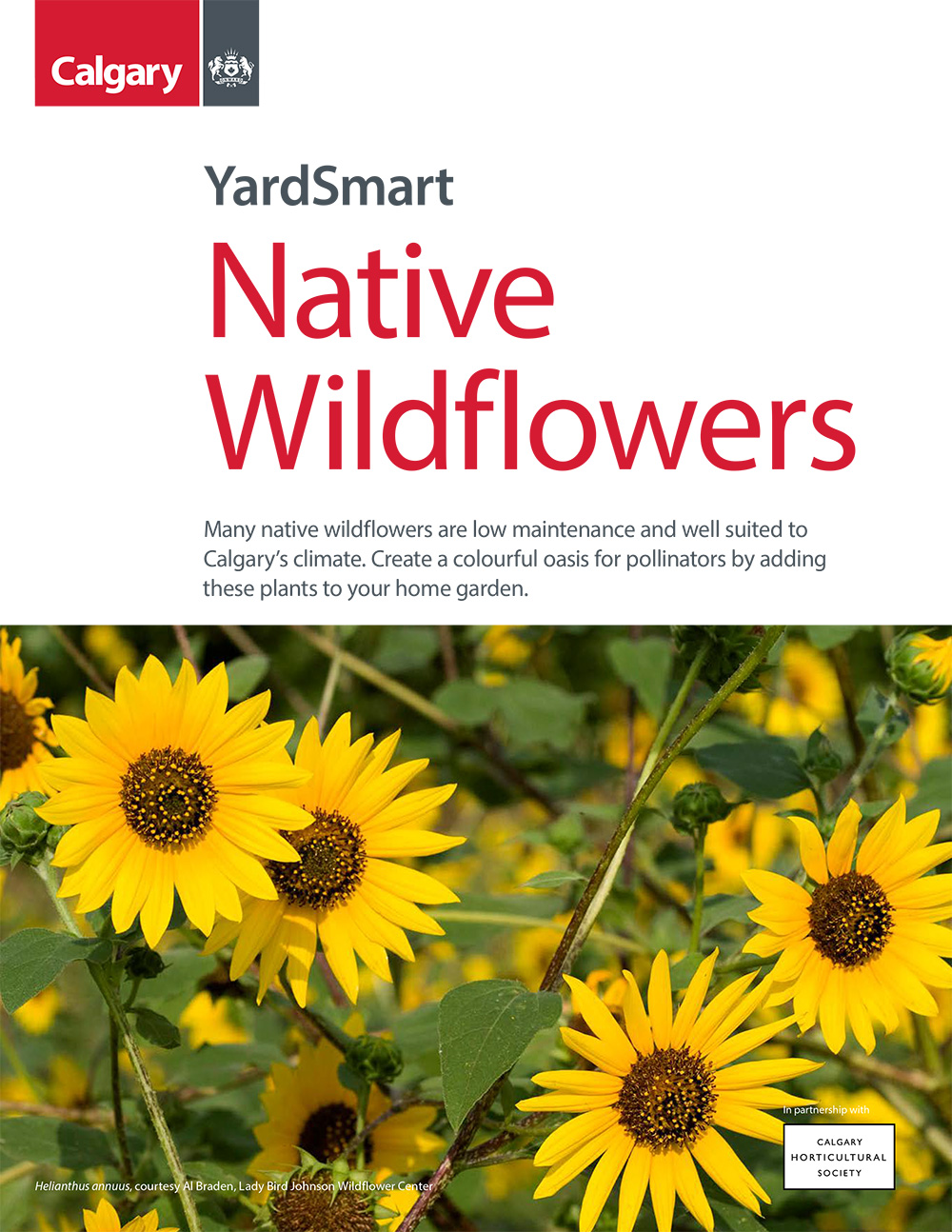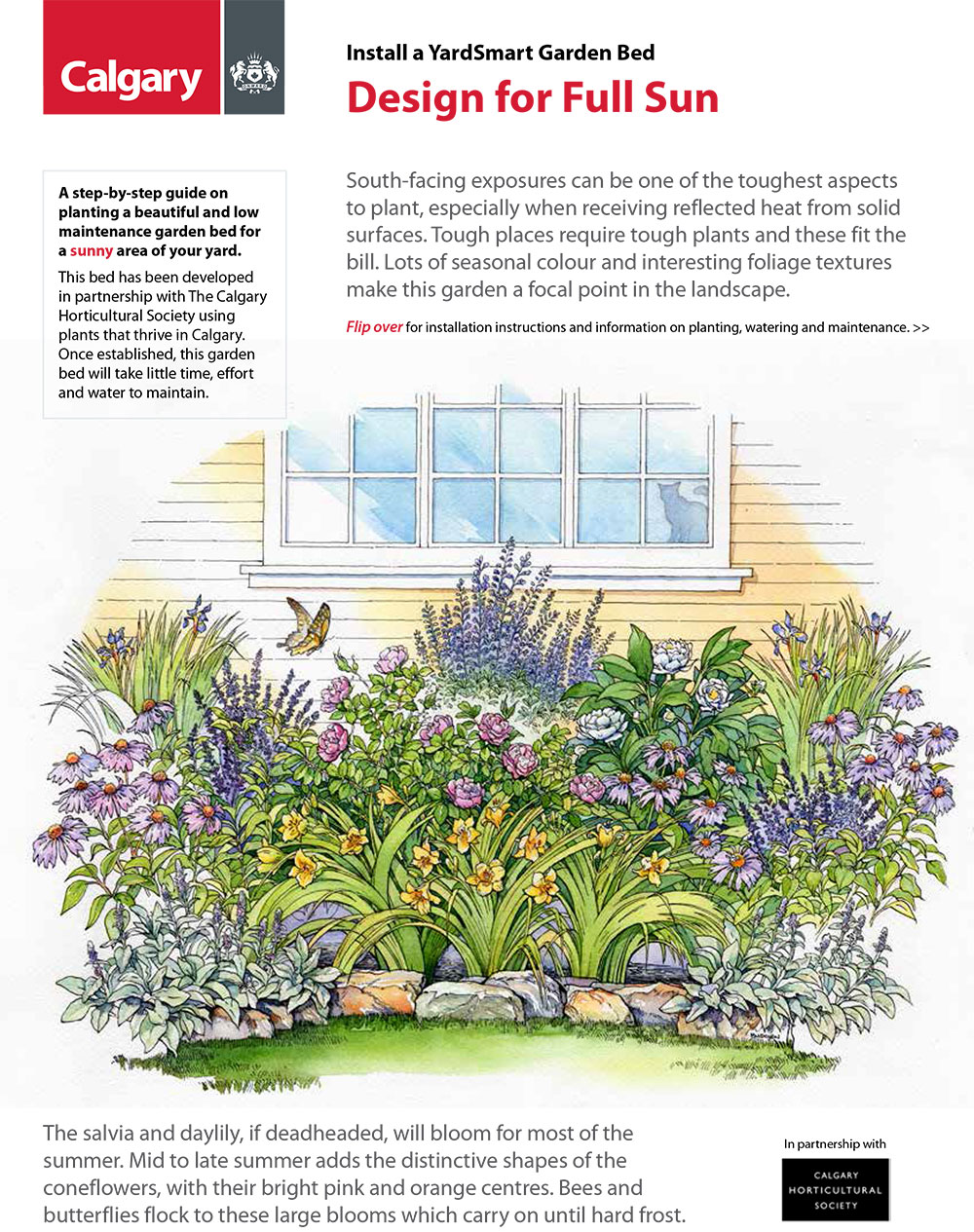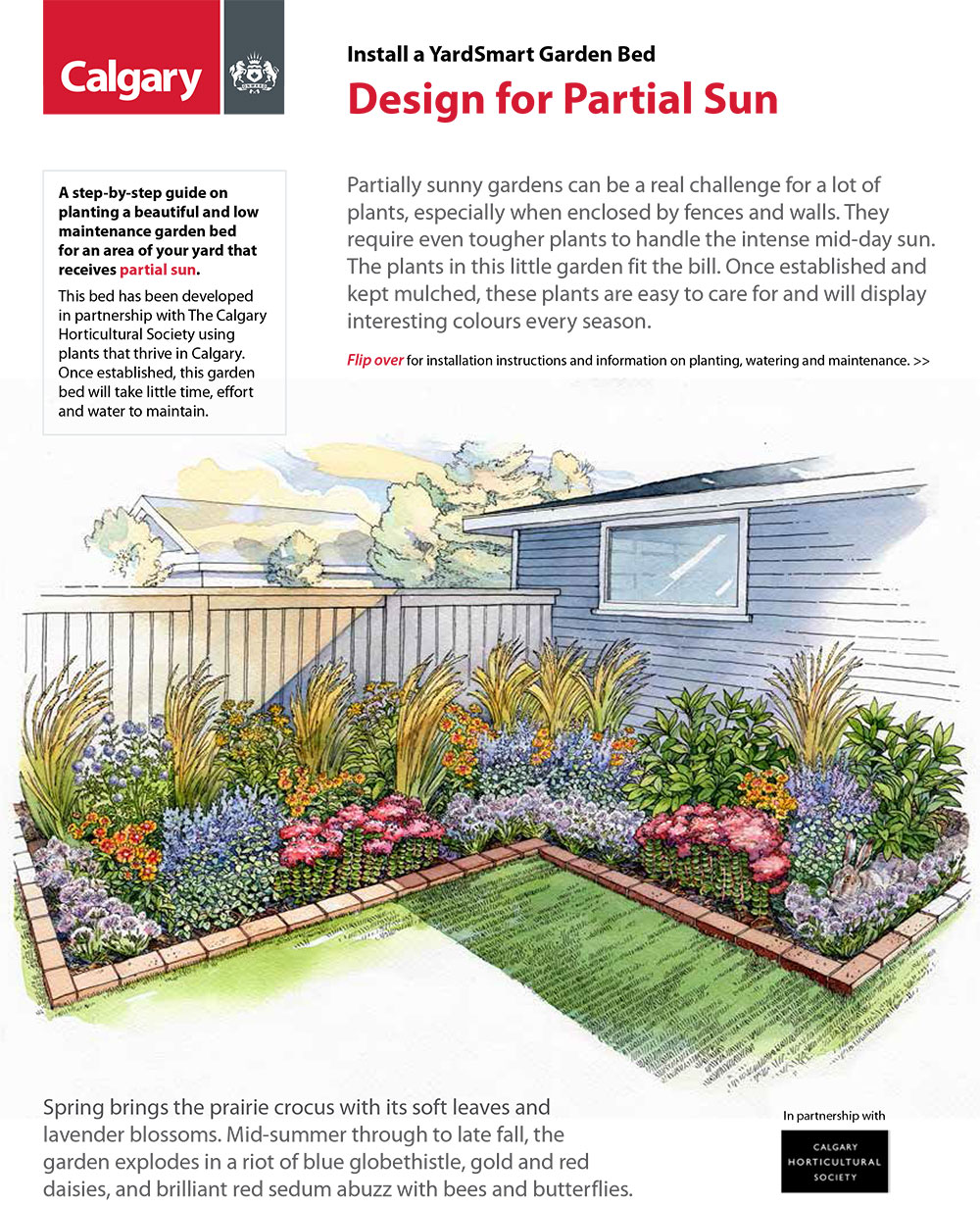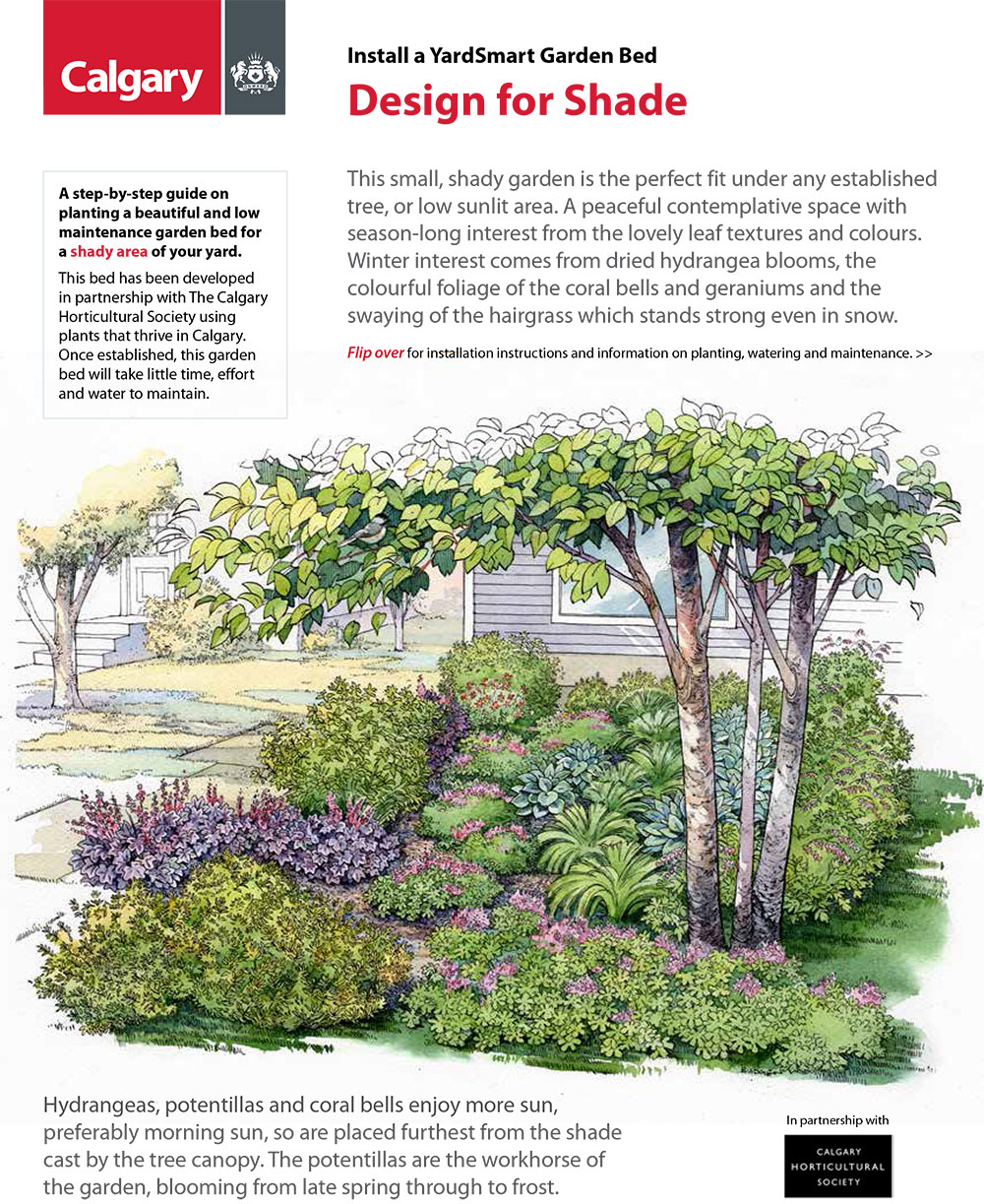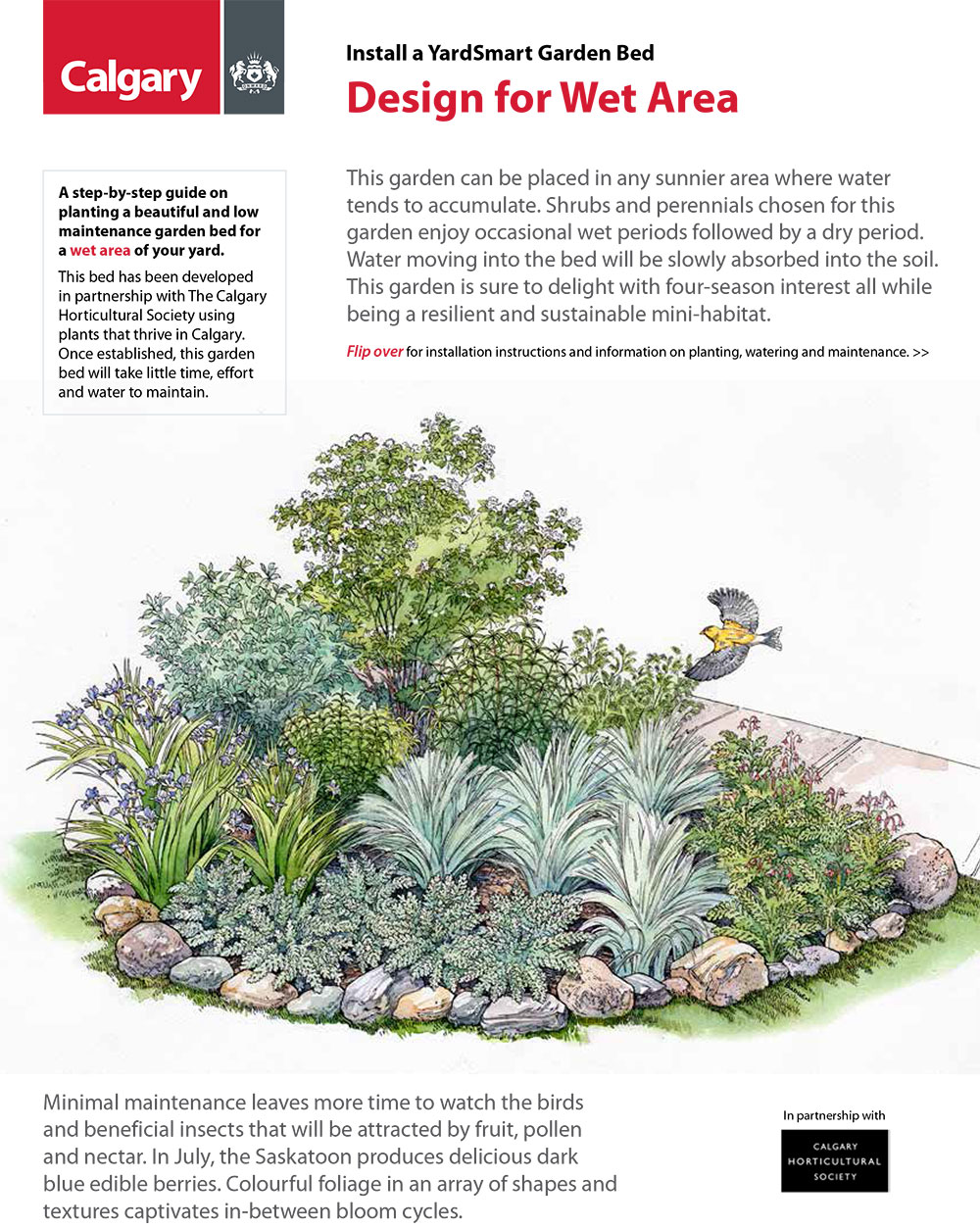YardSmart Native wildflowers
Many native wildflowers are low maintenance and well suited to Calgary’s climate. Create a colourful oasis for pollinators by adding these plants to your home garden.
Why plant native wildflowers?
Incorporating native wildflowers into your garden has many benefits. Native wildflowers are well adapted to Calgary’s climate and soil conditions and often require little maintenance, water and fertilizer once established. Plants suited to Calgary’s climate also provide homes, food, and nesting material for pollinators and other wildlife.
Biodiversity contributes to a sustainable and healthy landscape and mitigates the impacts of climate change.
Choosing native wildflowers
Calgary landscapes host an extensive variety of native wildflowers from which to choose, many of which are not listed here. Consider light exposure, moisture levels, soil type and space requirements when choosing native plant types. A combination of plants with different heights, flower shapes, sizes, colours and bloom times guarantee beauty as well as food and habitat for pollinators throughout the season.
Common native wildflowers can be found in garden centres and there are local native plant suppliers that specialize in these species. When planning your garden, call ahead of time to see what native plants are available. For the first year or two, follow the watering instructions that accompany each plant.
In following years, all plants will be drought tolerant and may only need water after 2-3 weeks of hot dry weather with little to no rainfall. For more tips on how to create a garden that thrives in Calgary, view our YardSmart basic steps and planning and design tips.
Types of native wildflowers
Full sun
Northern Sweetvetch
A member of the legume family, northern sweetvetch produces magnificent stalks of purple flowers throughout the growing season. Growing up to two feet in height, this plant is drought tolerant and favoured by bees.
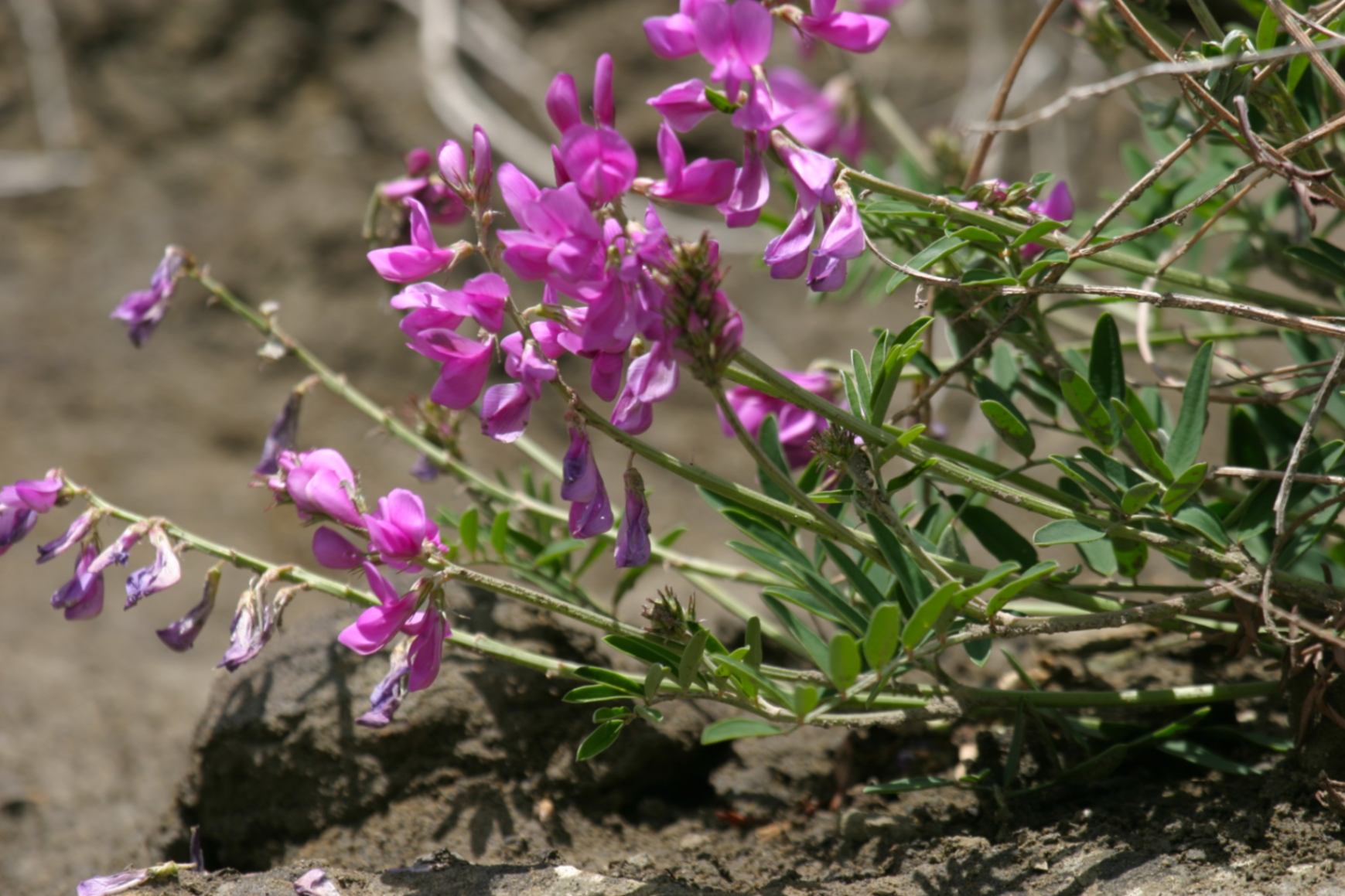
Hedysarum boreale
Showy Milkweed
Producing large, round clusters of pink flowers in late summer and early fall, showy milkweed blooms are fragrant and known to attract pollinators. Plants tend to grow in clumps to a maximum height of four feet.
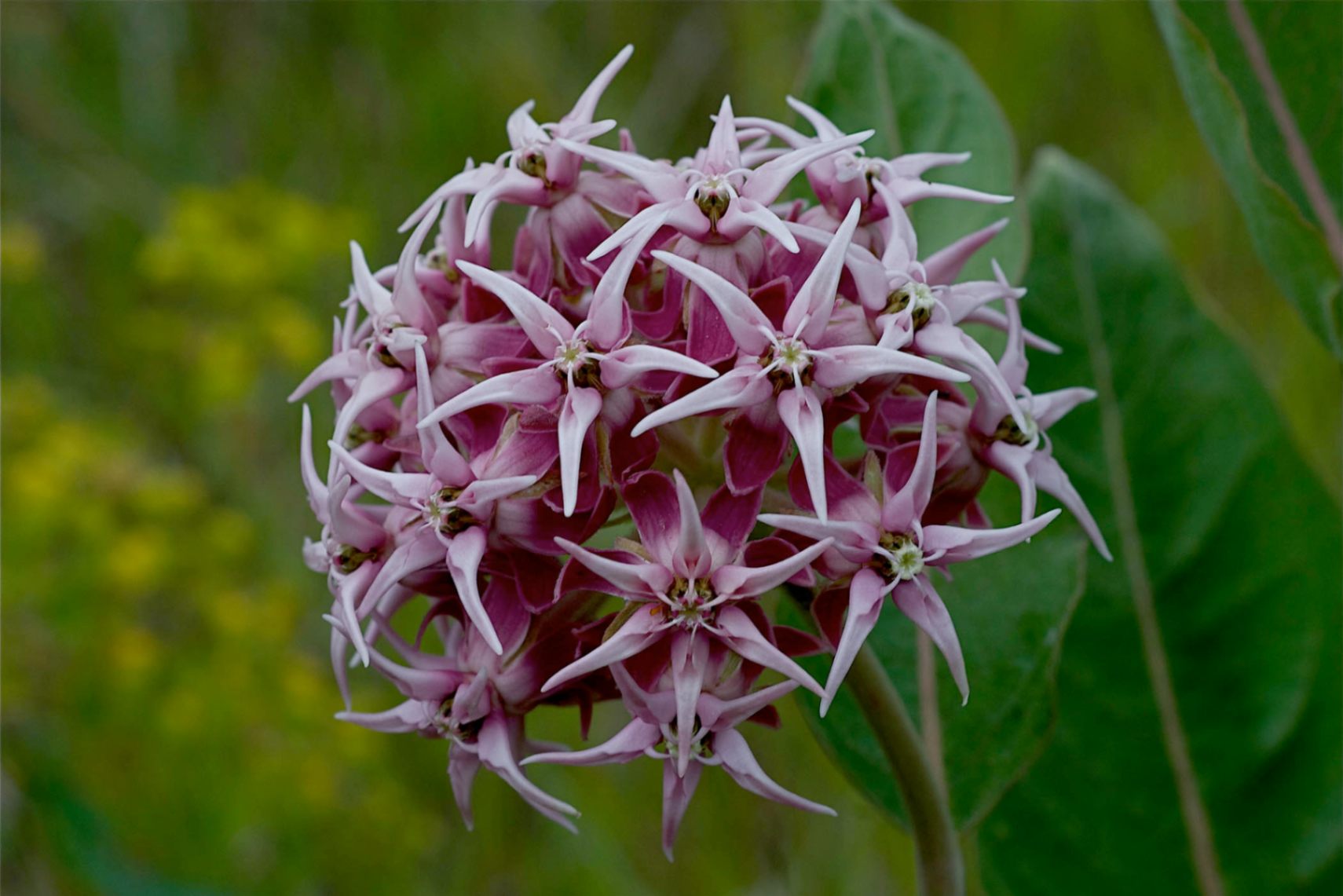
Asclepias speciosa2
Gumweed
This member of the sunflower family produces many yellow daisy-like blooms in late summer. A favourite of bees and butterflies, gumweed plants can grow to a height of three feet and thrive in sunny, dry conditions.
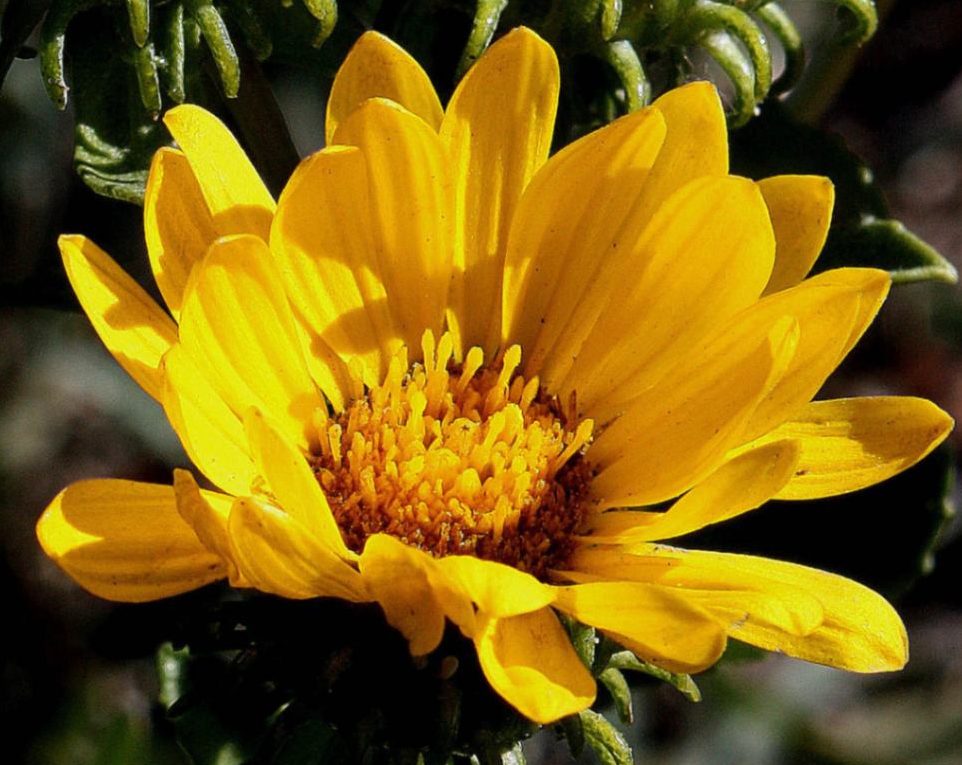
Grindelia squarrosa1
Purple Prairie Clover
These dense spikes of bright purple flowers are a striking accent in any garden. Blooming from June-August, Purple prairie clover is an especially important source of food for native bumble bees. This plant can reach a height of three feet.
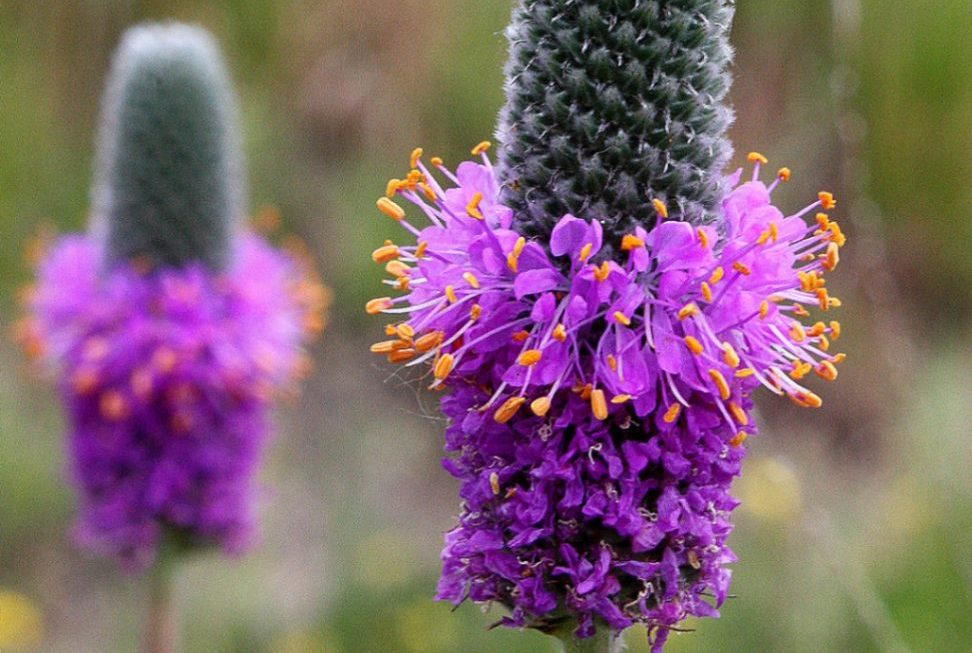
Dalea purpurea1
Yarrow
With feathery foliage and tight clusters of white flowers, this easy-to-grow plant is a musthave for any backyard garden.
Growing up to three feet in height, yarrow tolerates dry conditions and is attractive to pollinators. Yarrow blooms throughout the summer.
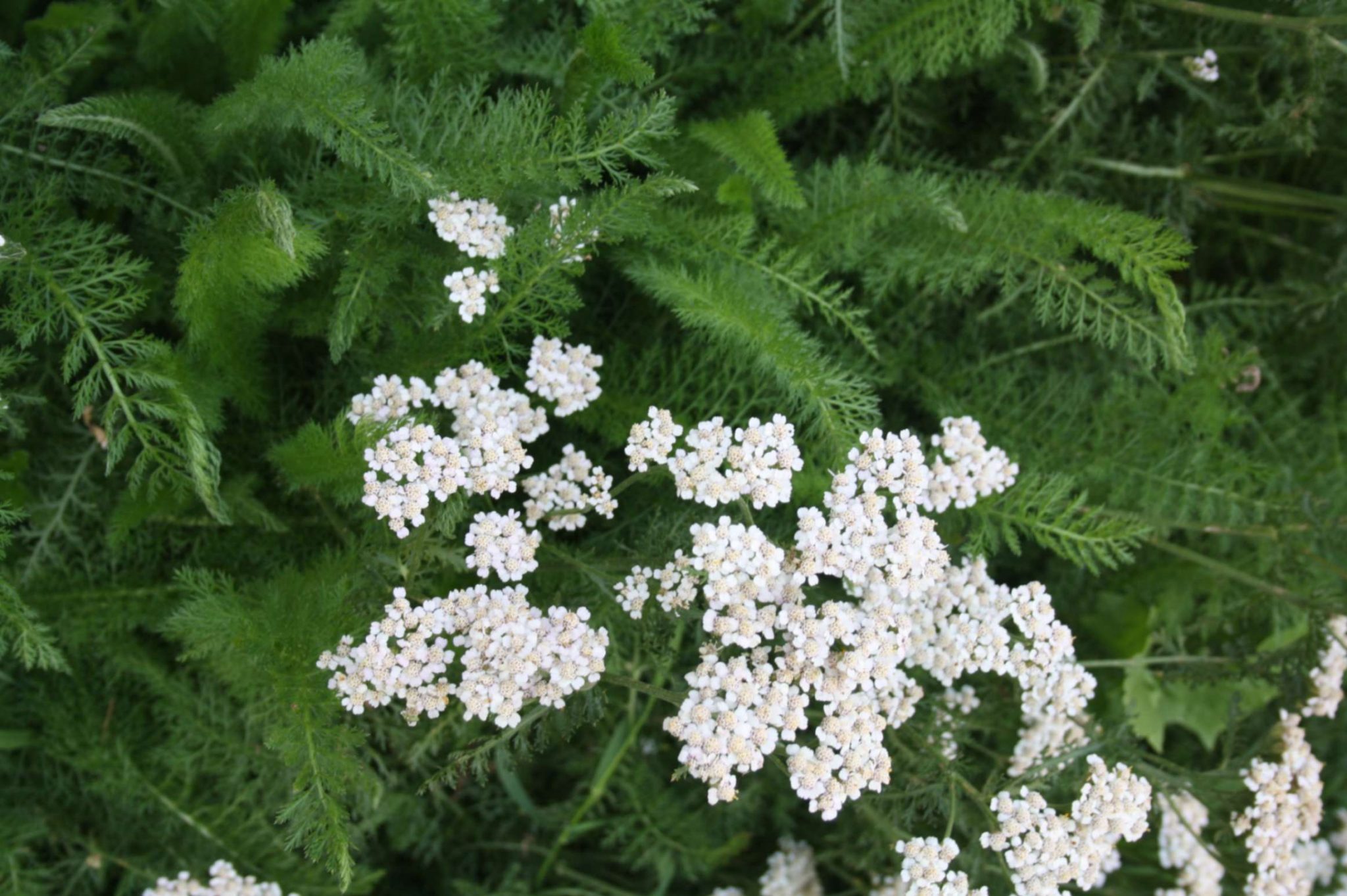
Achillea borealis
Blue Flax
A hardy plant of the prairies, blue flax is easily recognized by its small blue flowers and tall willowy stems. Reaching up to a foot in height, blue flax blooms throughout the summer and adds a graceful splash of blue colour to any garden. This plant is an important source of pollen and nectar for local pollinators.
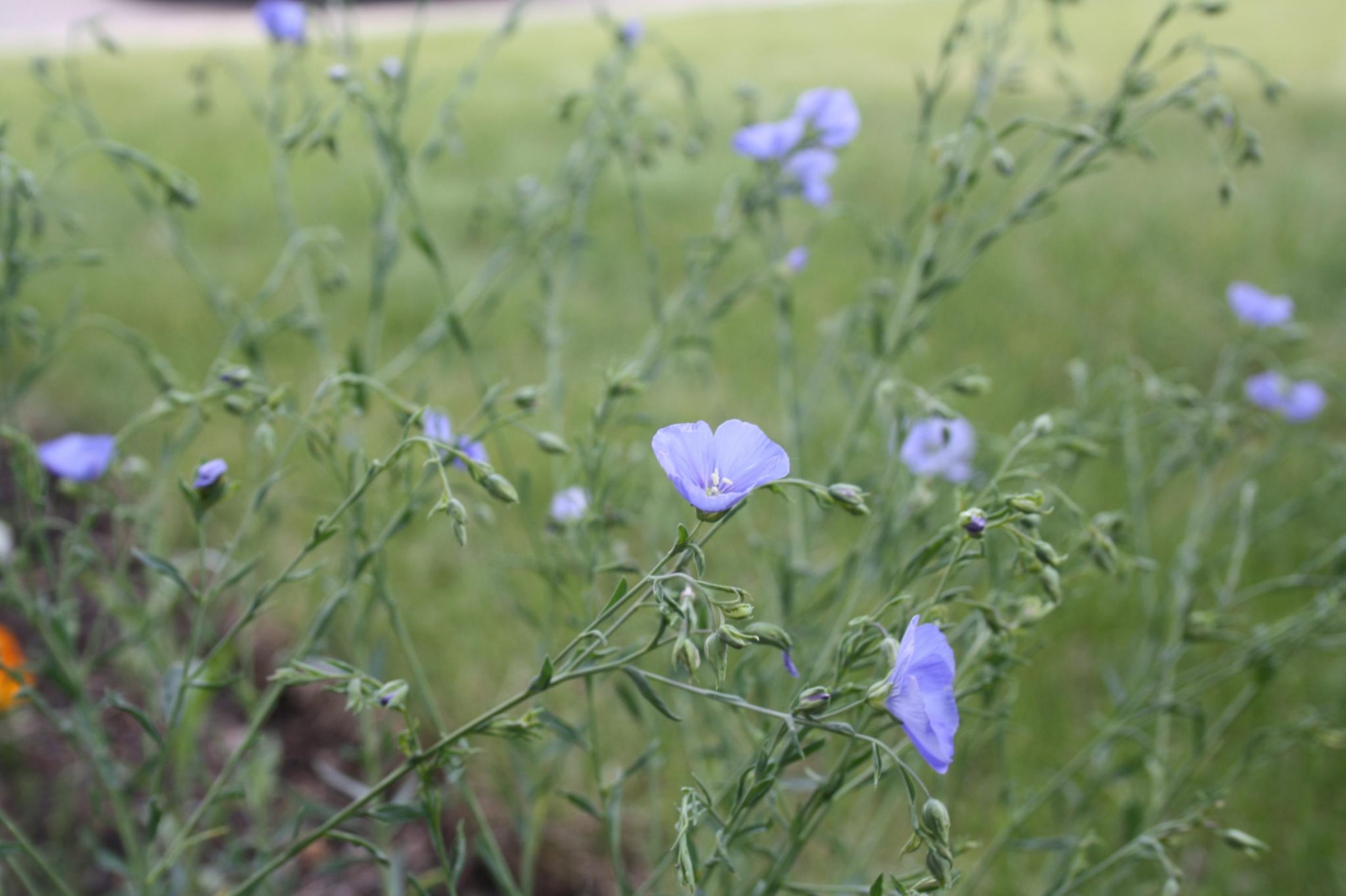
Linum lewisii
Smooth Aster
Producing many flowers with bright yellow centre discs surrounded by striking purple petals, smooth aster can reach a height of up to four feet. A drought tolerant plant which blooms in the fall, asters are known to attract bees and butterflies.
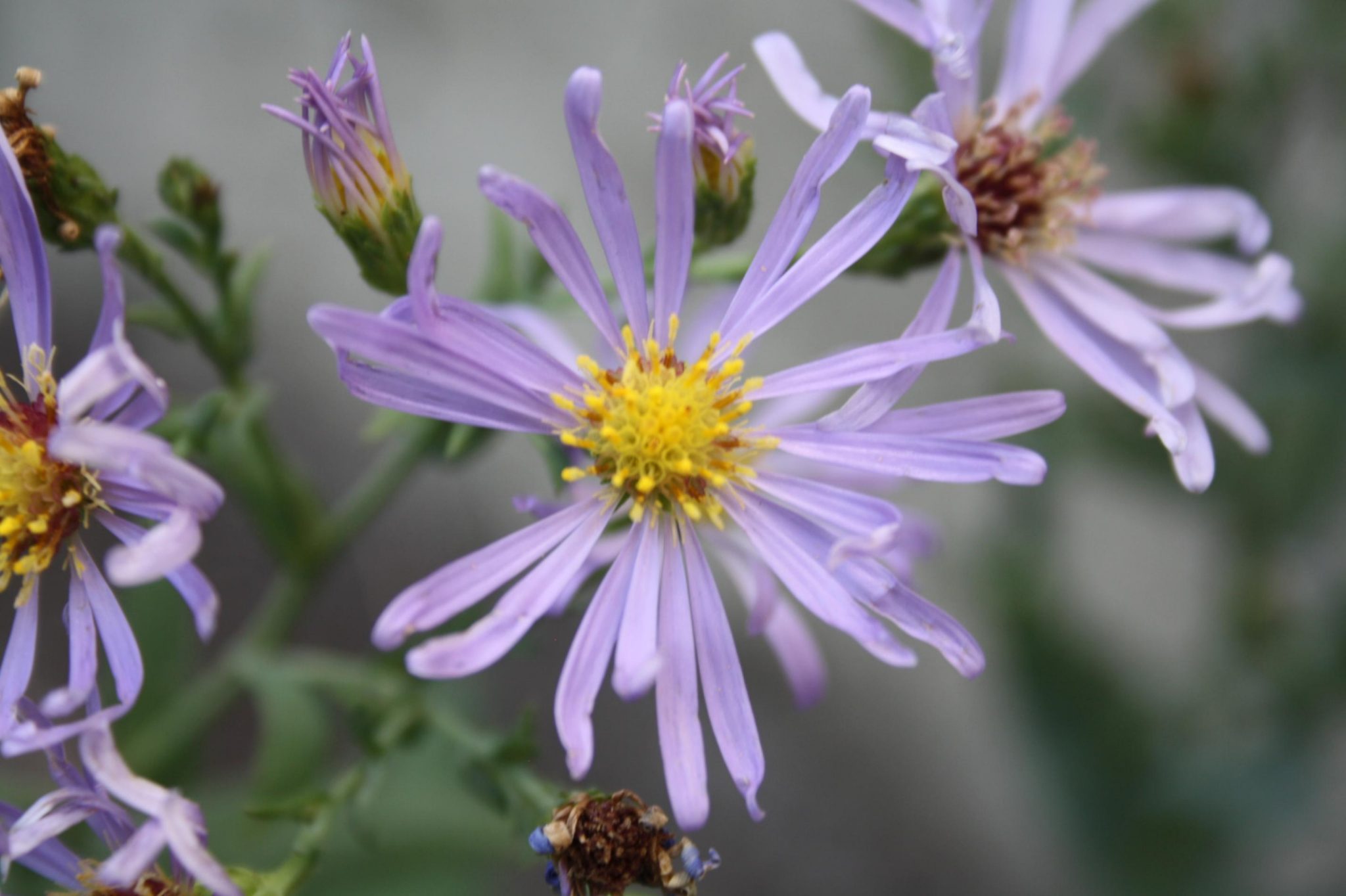
Symphyotrichum laeve
Canada Goldenrod
This showy late-season bloomer is an especially important source of pollen for native bees. Growing from three to six feet in height with large, pyramid-shaped clusters of yellow flowers, Canada goldenrod is a favourite of both gardeners and pollinators.

Solidago lepida2 / Solidago altissima
Prairie Coneflower
This plant is named for its sombrero-shaped flowerhead, which is characterized by a long cone of tiny flowers atop a base of yellow petals. A late summer bloomer, this upright plant forms clumps, is attractive to pollinators, and is very drought tolerant. Prairie coneflower plants can reach a height of two feet.
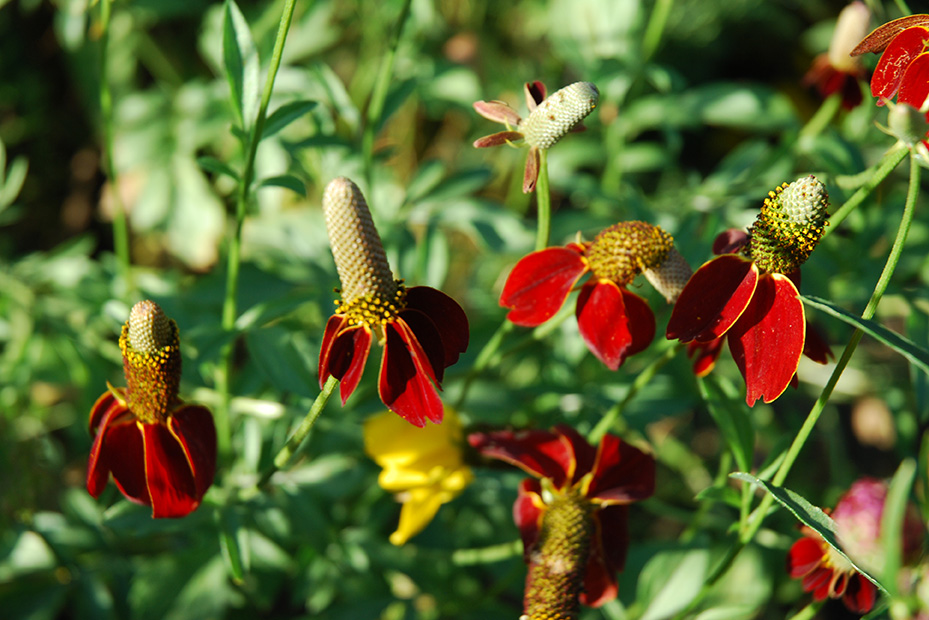
Ratibida columnifera9
Prairie Nodding Onion
Named for its nodding clusters of star-shaped pink flowers, this clump-forming plant grows on mostly leafless stalks. Flowering mid-season, prairie nodding onion grows from a bulb and plants can reach up to two feet in height.
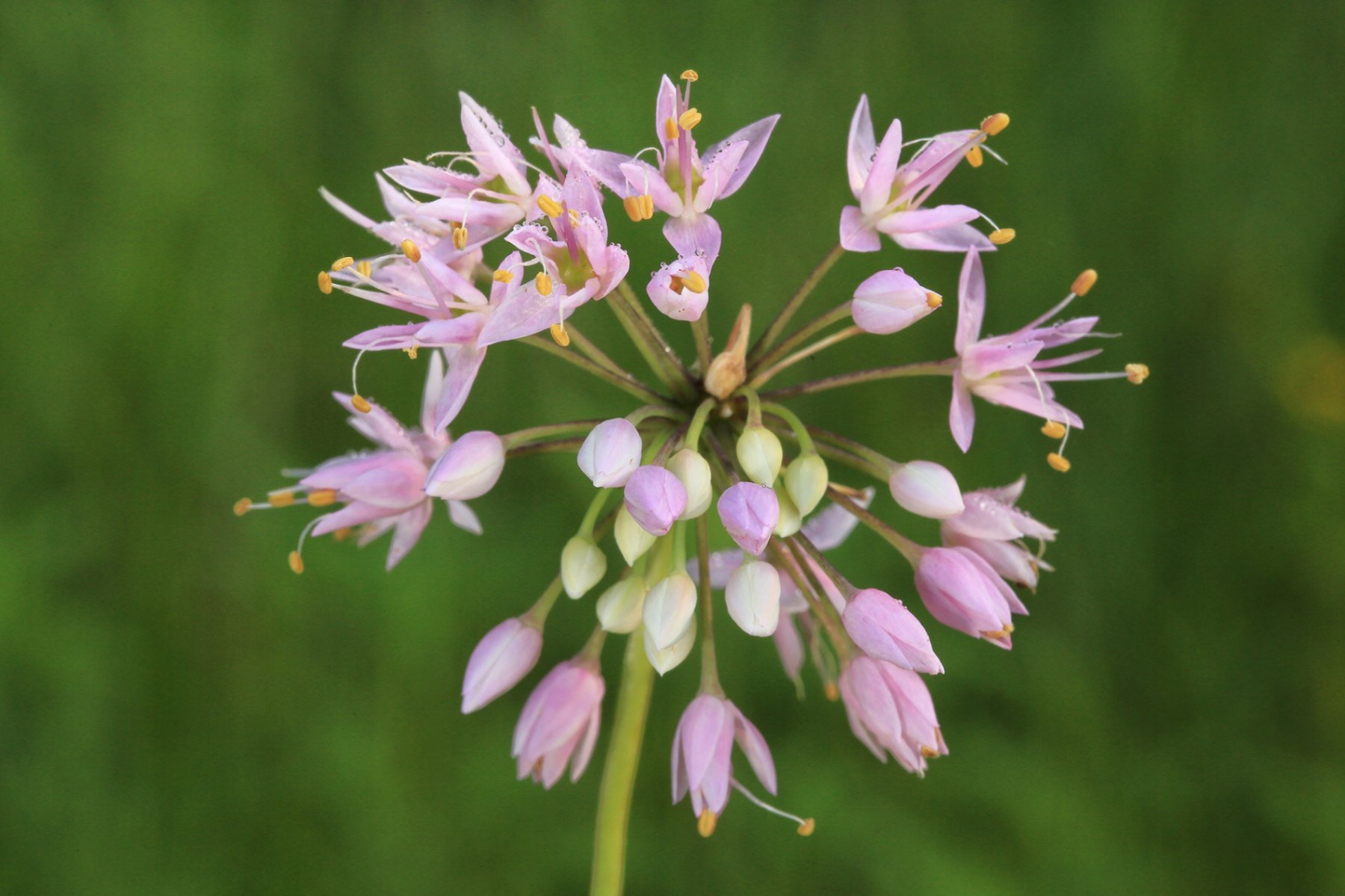
Allium cernuum3
Tufted White Prairie Aster
With dense clusters of overlapping white flowers crowded along the stem, this low-growing aster species blooms in the late summer and early fall. An important source of nectar and pollen for local insects, this type of aster also serves as a host plant for native butterflies.
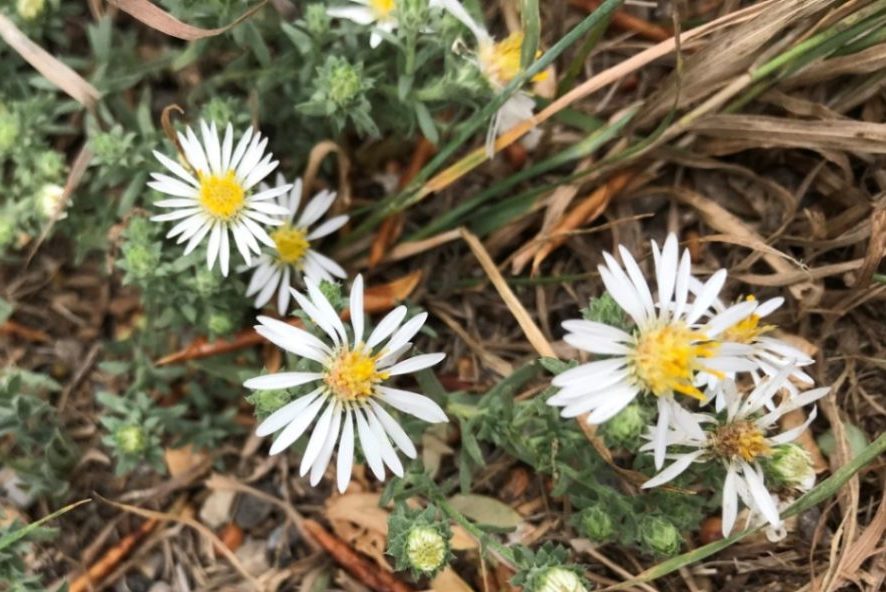
Symphyotrichum ericoides
Shining Arnica
A member of the sunflower family, shining arnica produces yellow flowers that bloom on mostly leafless stems. Flowering in late spring, shining arnica can grow one to two feet in height. It is an important plant for many types of native bumble bee.
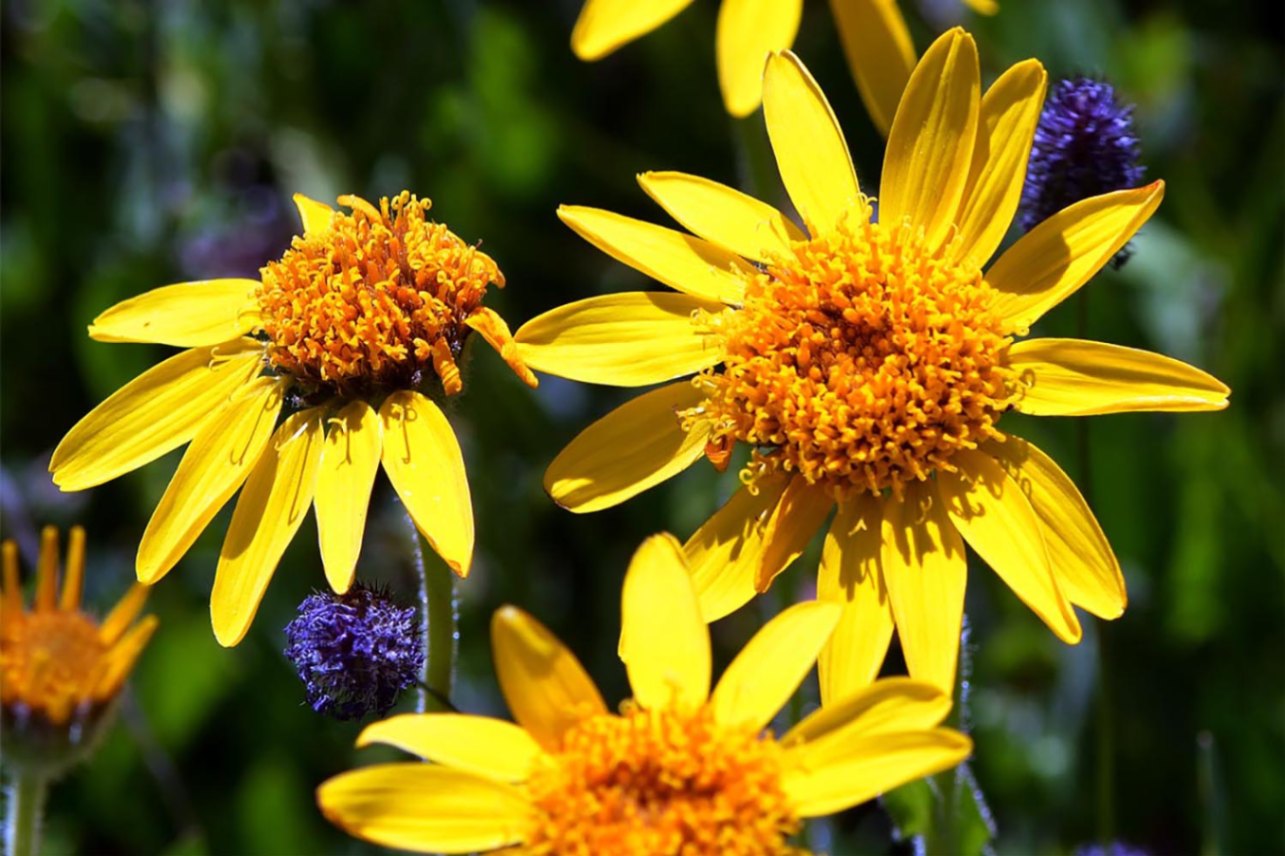
Arnica fulgens4
Golden Bean
A member of the legume family, these spikes of golden flowers are a common sight on the prairies. Both a host plant and a source of nectar for early season butterflies, these stout plants are a lovely addition to a front border and add a splash of colour to spring gardens.
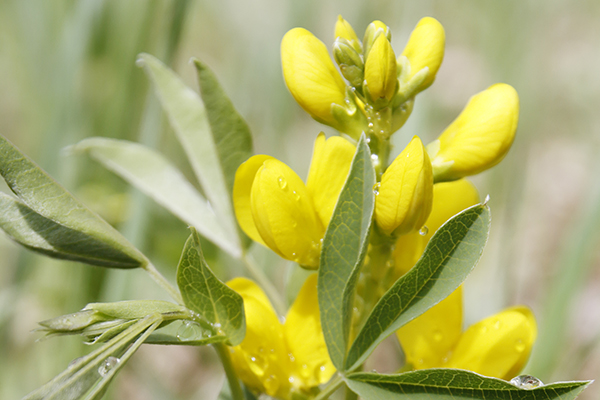
Thermopsis rhombifolia
Blanket Flower
The showy red and yellow flowers of these upright plants are an important source of pollen and nectar for several types of bees and butterflies. A drought tolerant plant, blanket flower blooms from late summer through the fall and plants can reach a height of four feet.
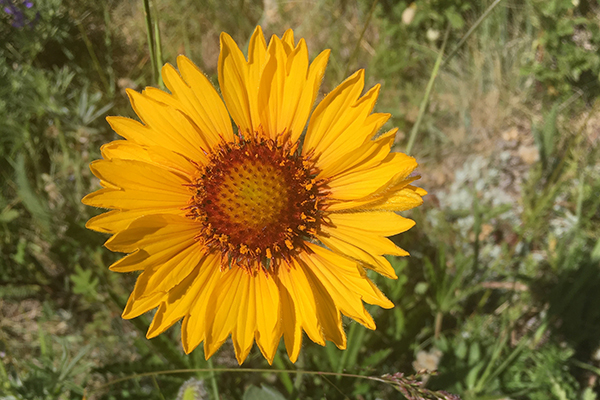
Gaillardia aristata
Cut-Leaved Anemone
Producing pinkish flowers on single stalks, this elegant plant grows to a maximum of one foot in height. Blooming in late spring, this plant attracts several types of small native bees and the large silky seed heads are an interesting addition to garden borders.
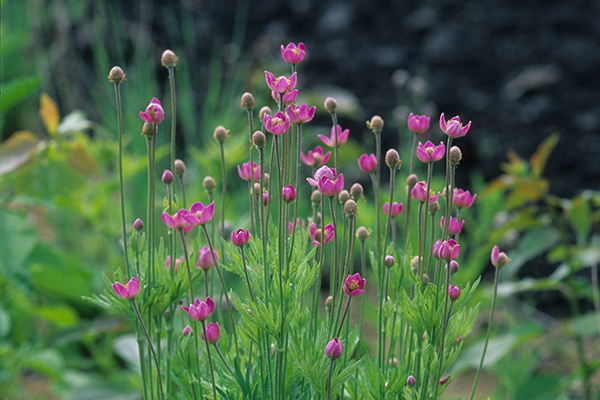
Anemone multifida5
Philadelphia Fleabane
With clusters of yellowcentred flowers surrounded by fine purple petals, these plants are a delight to gardeners. Blooming from mid-spring through to mid-summer, plants can reach a maximum height of three feet. Philadelphia Fleabane attracts many types of bees and other pollinating insects.
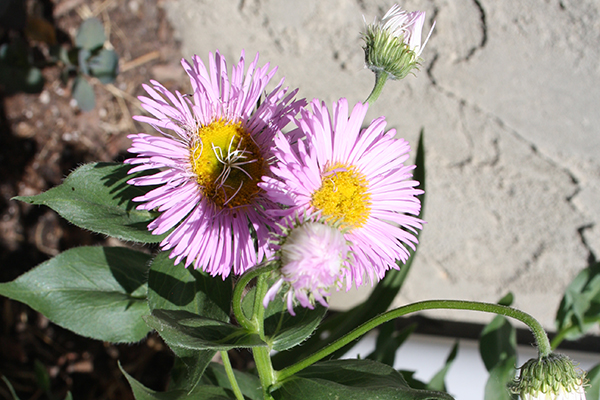
Erigeron philadelphicus
Prairie Crocus
Referred to as a crocus, these plants are a member of the buttercup family. One of the first plants to bloom in the spring, these furry purple flowers are low growing and attractive to small bees and insects. The round silken seed heads of prairie crocus add a unique element to garden plantings well after the plant has bloomed.
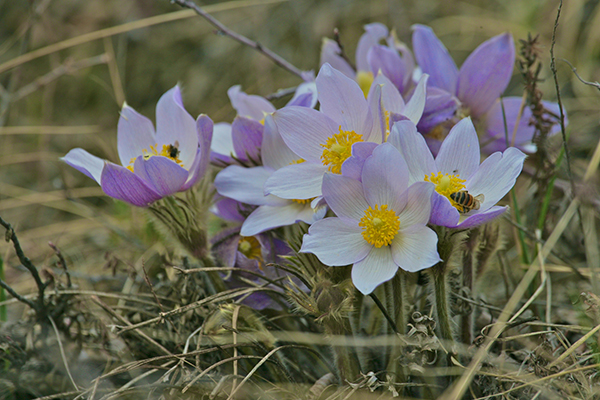
Pulsatilla nuttalliana
Rocky Mountain Bee Plant
With dainty purplish-white flowers perched on long leafy stalks, this plant is a favourite of insect pollinators. Growing to a maximum height of four feet, this plant can be used to enhance the pollination of garden plants such as vegetables. Blooming throughout the summer, Rocky Mountain bee plant will self-seed annually.
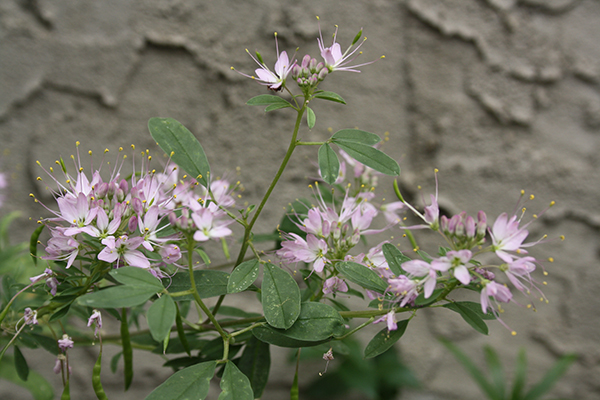
Peritoma serrulata
Hairy Golden Aster
Growing in thick clumps, golden aster thrives in sunny conditions and produces yellow daisy-like flowers in late summer. Plants can reach up to three feet in height and are attractive to several local pollinator species.
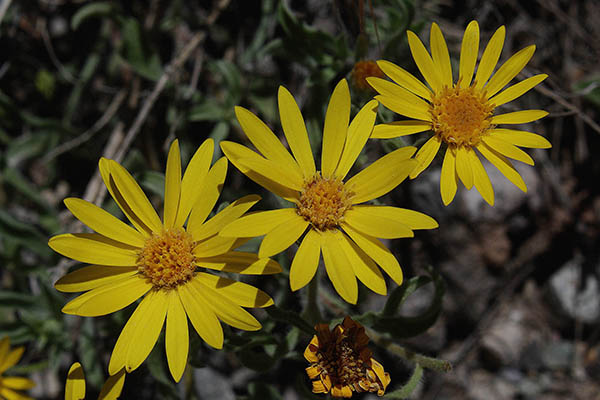
Heterotheca villosa1
Annual Sunflower
The large, showy yellow flower heads of annual sunflower are a showstopper in any garden. Growing up to eight feet in height, the pollen and nectar of this plant are used by many insects in the late summer and early fall. The seeds also provide a food source for overwintering birds. This annual plant self-seeds and is easy to grow.
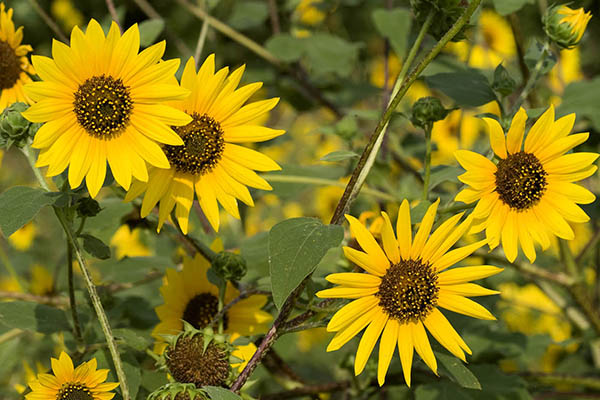
Helianthus annuus6
Part shade
Wild Bergamot
This is Alberta’s wild beebalm. With tall, dramatic stalks topped with fragrant, shaggy, lilac-coloured flowers, this upright plant can grow to a height of five feet. Blooming in mid-summer, wild bergamot is an important source of nectar and pollen for bees, butterflies and hummingbirds.
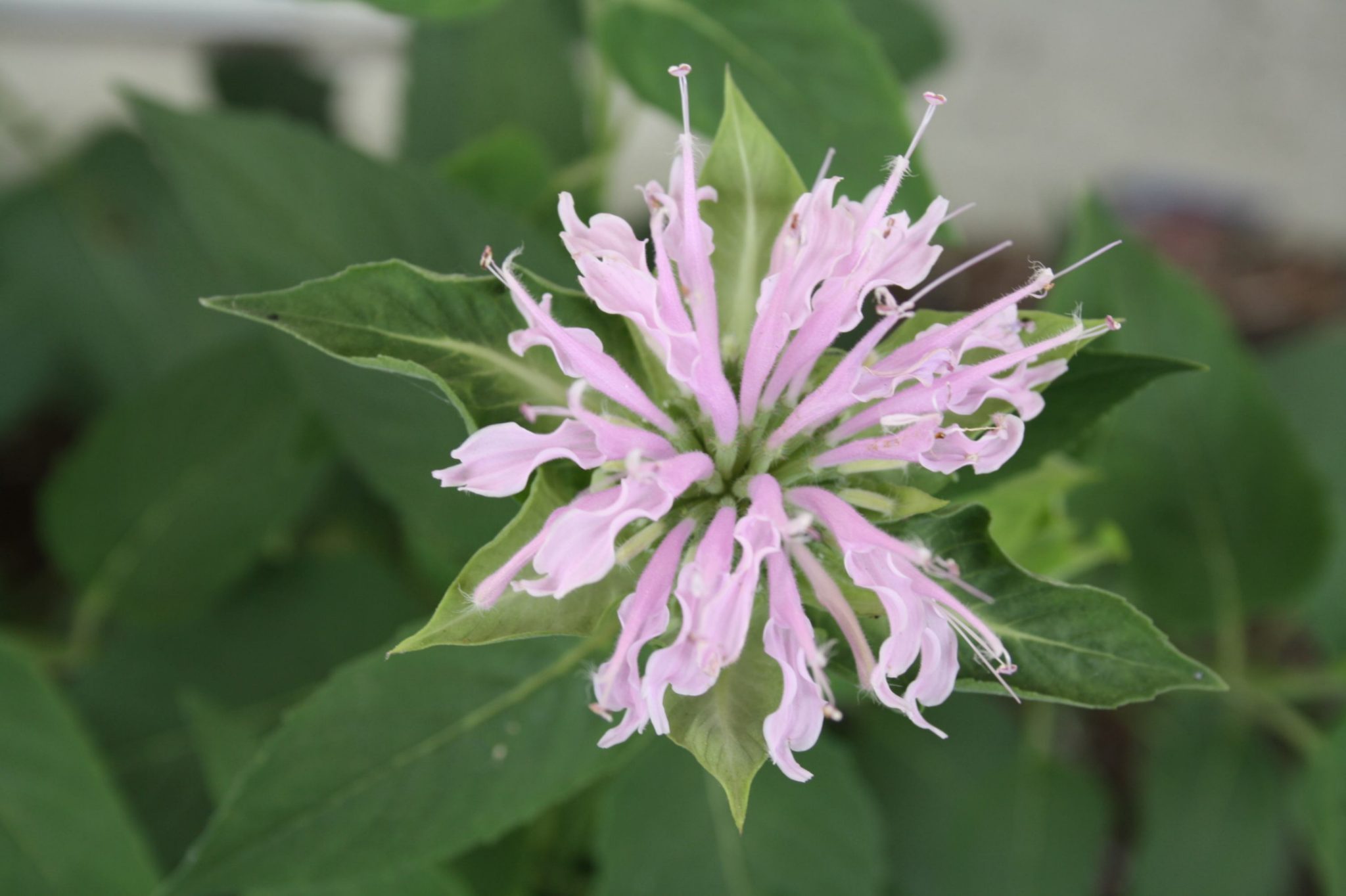
Monarda fistulosa
Sticky Purple Geranium
Flowering from late spring to late summer, sticky purple geranium provides blooms for pollinators throughout the season. This plant has tall, branching stems topped by clusters of small purple flowers. After blooming, the deeply lobed leaves turn a brilliant shade of red, adding a splash of colour to late fall gardens.
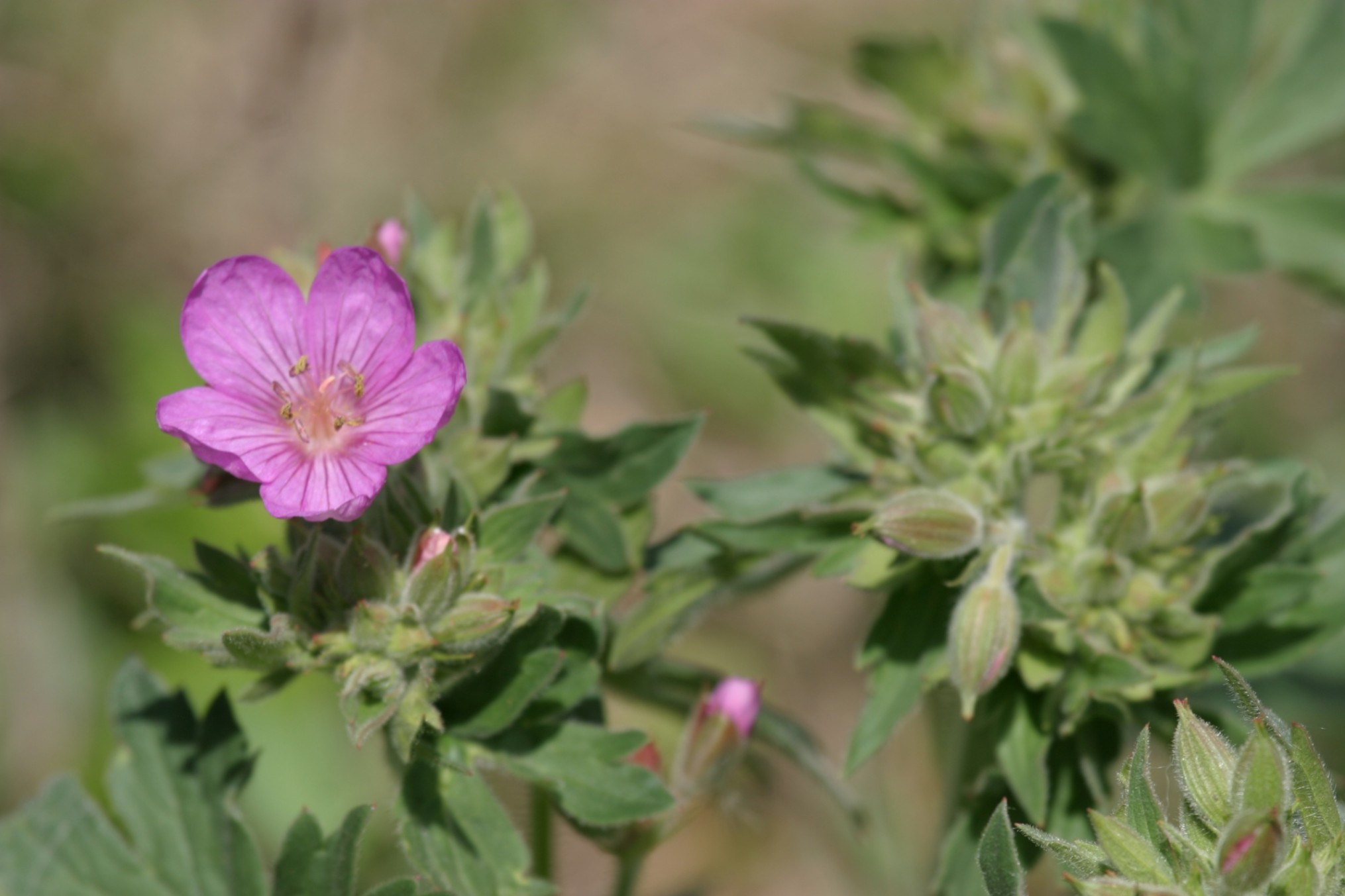
Geranium viscosissimum
Joe Pye Weed
Topped with showy crowns of violet flowers, Joe Pye weed is a striking wildflower. Blooming in late summer and early fall, plants can grow to a height of seven feet. Prized by bumble bees, butterflies and other insect pollinators, the hollow stems of this plant are often used as nesting chambers by solitary bees.
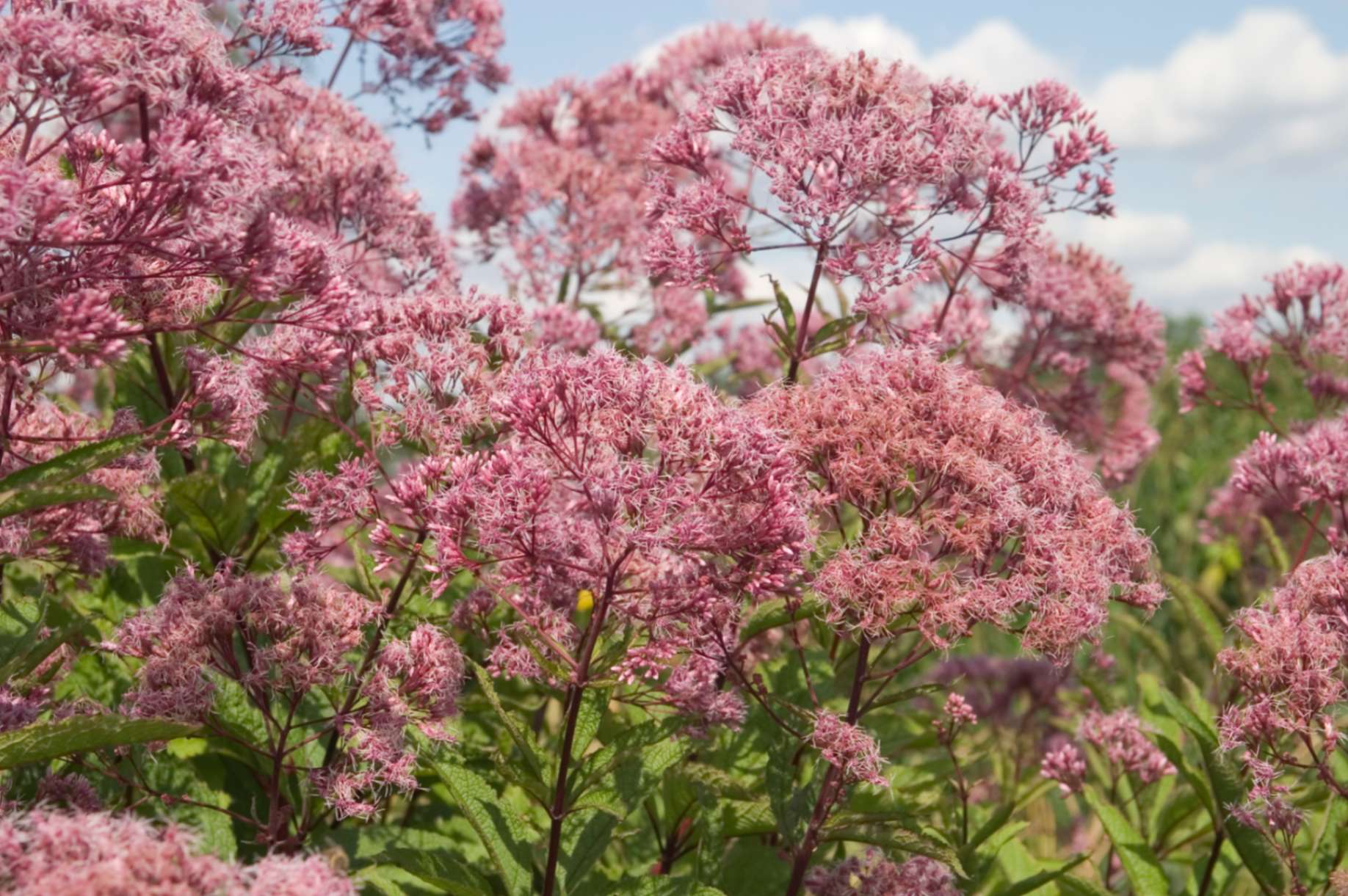
Eutrochium maculatum
Harebell
With delicate bell-shaped blue flowers and feathery leaves, harebell makes a nice border plant. Growing up to one foot in height, this hardy plant blooms from mid-summer to early fall. An important source of nectar and pollen for pollinators. One native Alberta bee specializes exclusively on this plant.
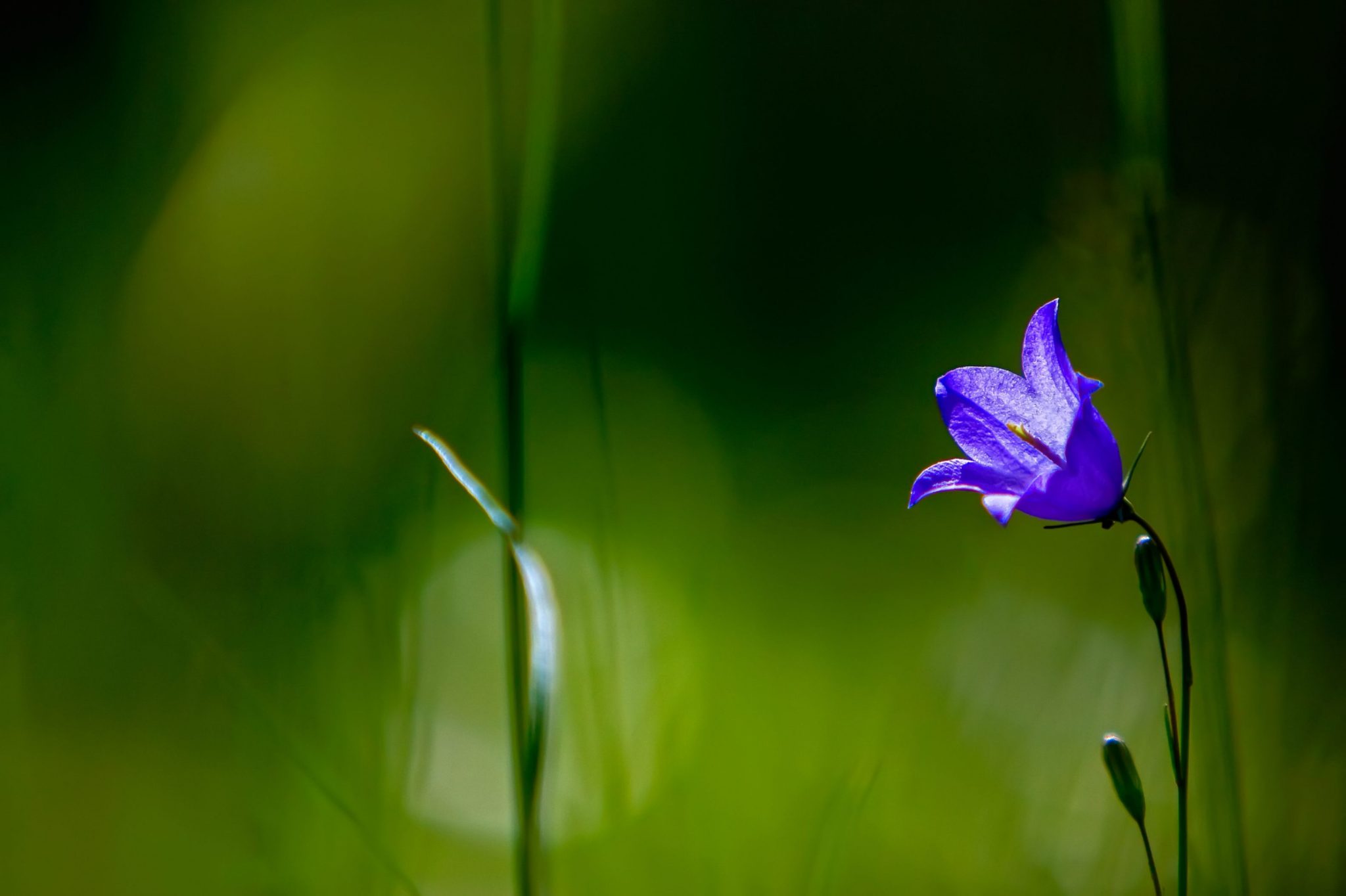
Campanula alaskana
Heart Leaved Arnica
The yellow daisy-like blooms set atop tall stems and heart-shaped leaves of this plant make it a great choice for backyard gardens. Reaching a height of two feet in late spring, this plant is visited by many types of bumble bee. Growing from a rootstalk, the leaves of this plant form a beautiful carpet of foliage.
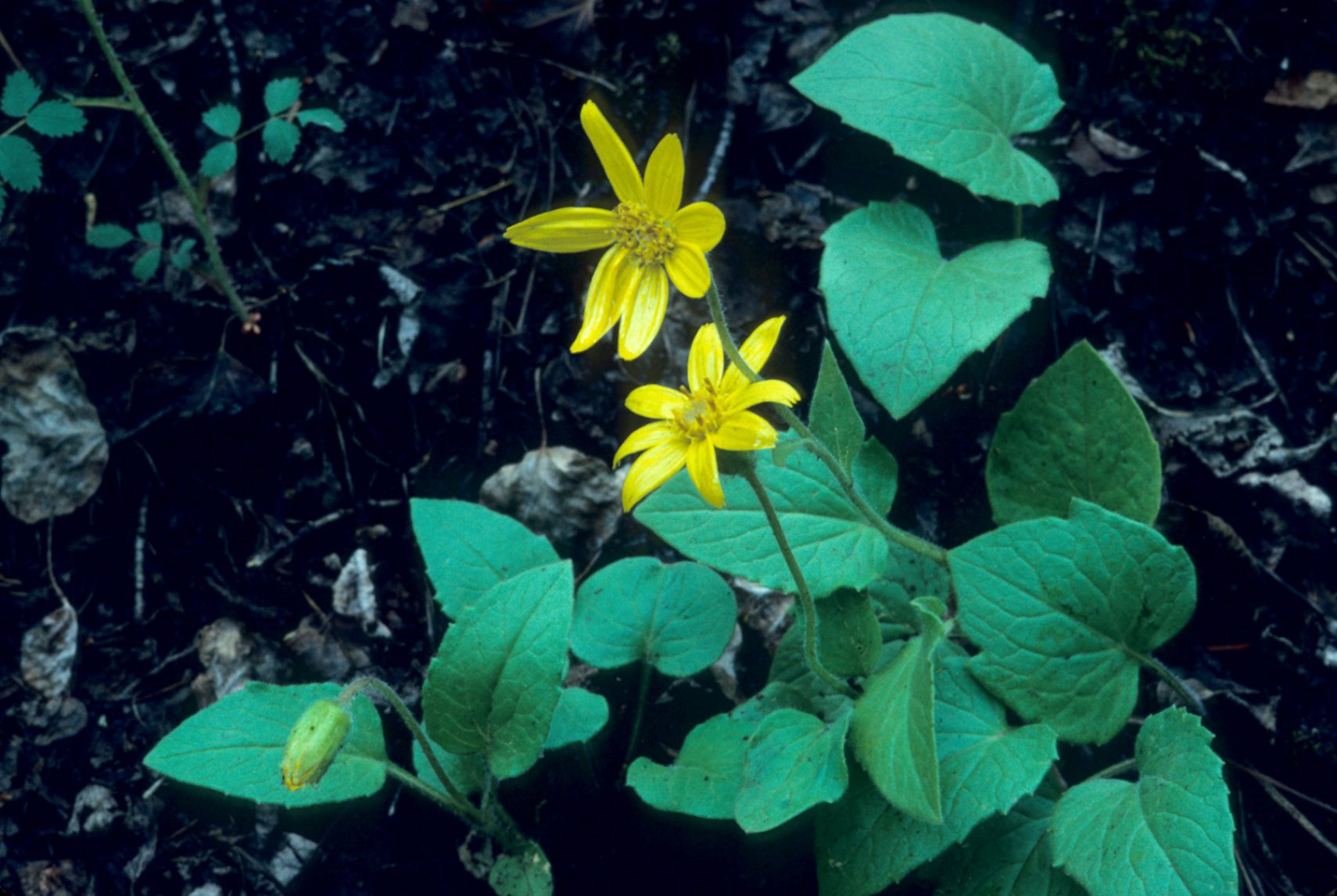
Arnica cordifolia5
Slender Beardtongue
With slim stems of tubular blue flowers and glossy foliage, this plant is a great choice for borders. Flower stalks bloom to a height of one foot in the late spring. Slender beardtongue attracts many pollinators and is an excellent addition to backyard gardens.
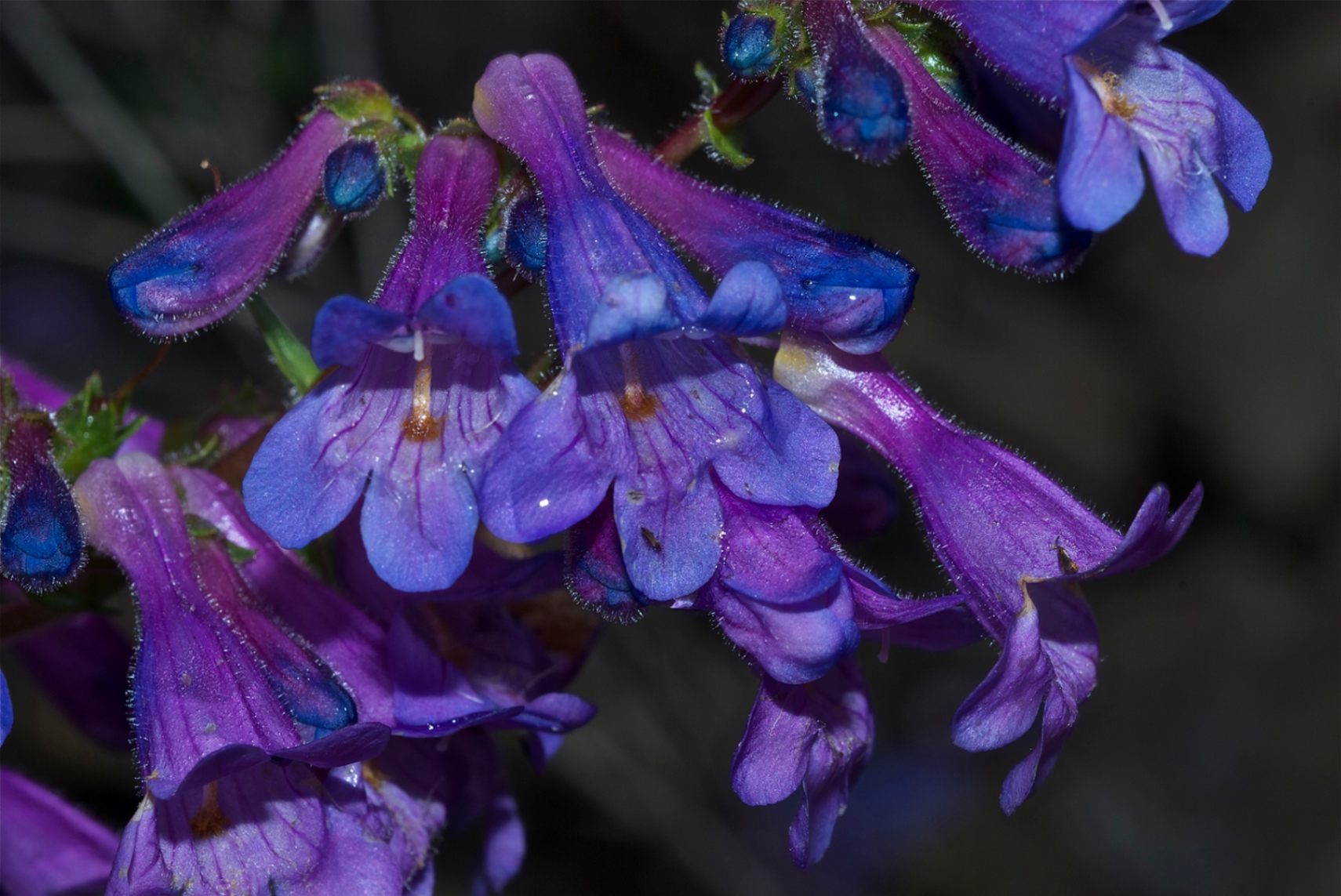
Penstemon procerus2
Giant Hyssop
A member of the mint family, giant hyssop plants contain upright stems topped with spikes of tiny, tubular purple flowers. Growing in bushy clumps, this plant blooms throughout the summer and can reach heights of four feet. A known favourite of insect pollinators, giant hyssop attracts birds, butterflies and bees.
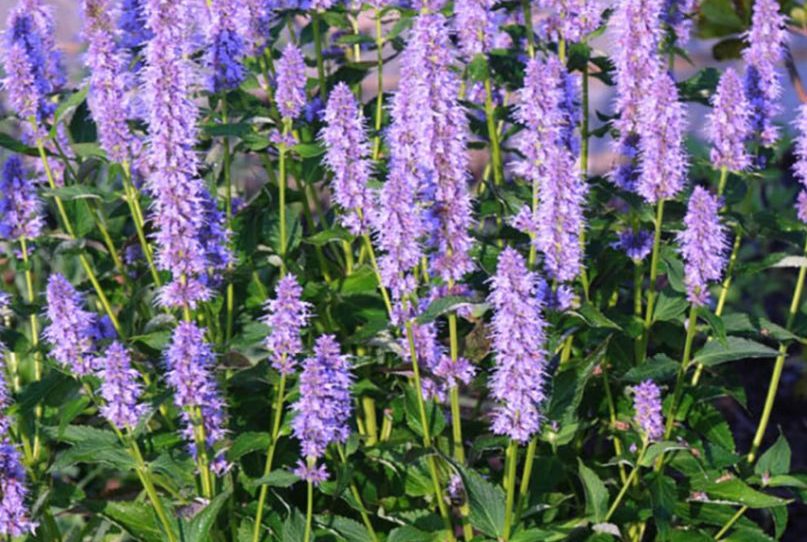
Agastache foeniculum4
Smooth Fleabane
These delicate plants add a burst of colour to summer gardens. Growing to just over one foot in height, each plant stalk contains multiple daisylike, purple flower heads. Smooth fleabane makes an excellent cut flower and attracts bees, butterflies and other pollinating insects.
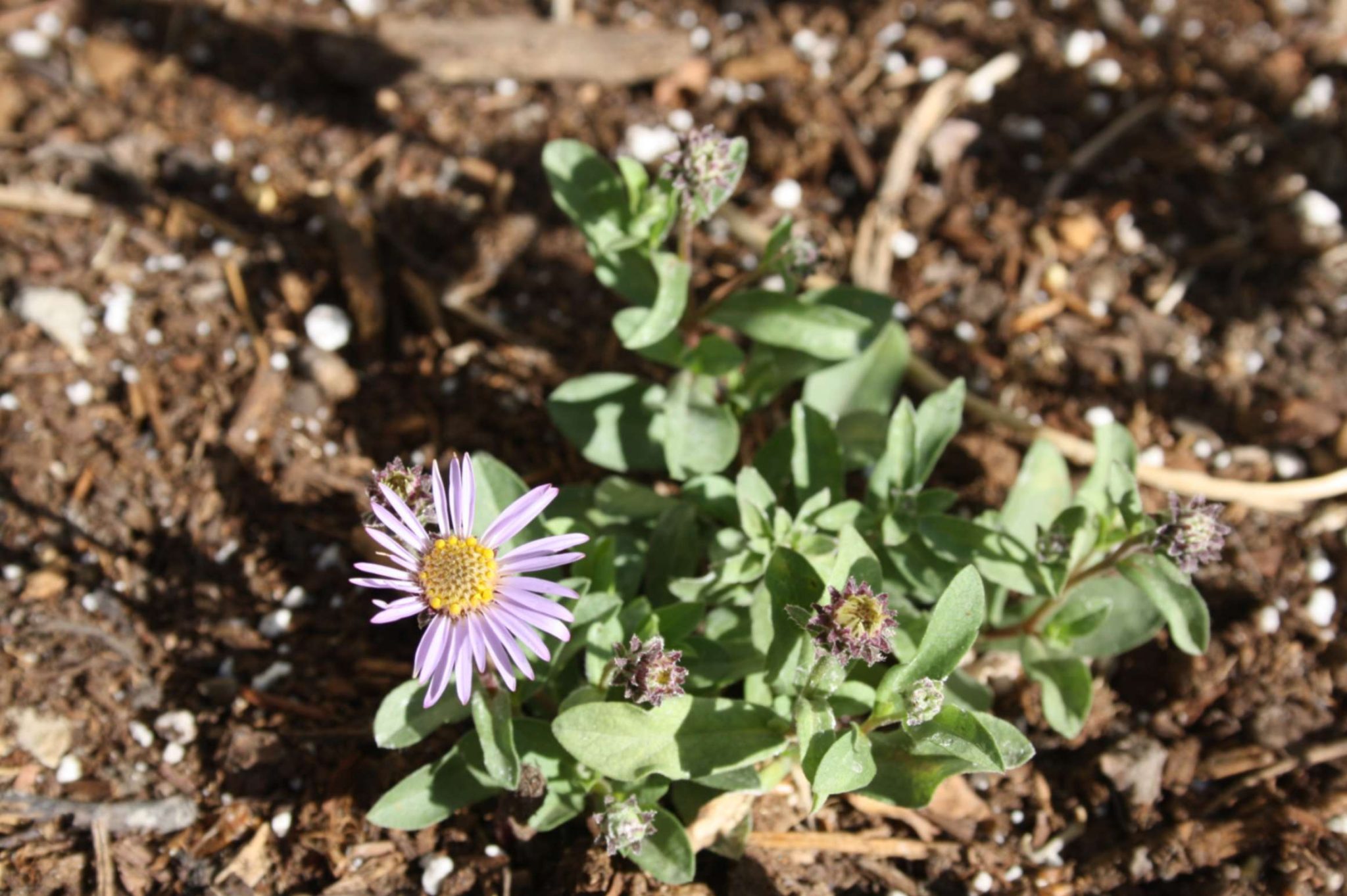
Erigeron glabellus
Shade
Tall Lungwort
These nodding clusters of blue, bell-shaped flowers emerge in late spring and early summer. Set atop long delicate stems, this plant is pollinated by native bumble bees. Tall lungwort grows to a maximum height of four feet and is a hardy perennial that works well in shaded locations.
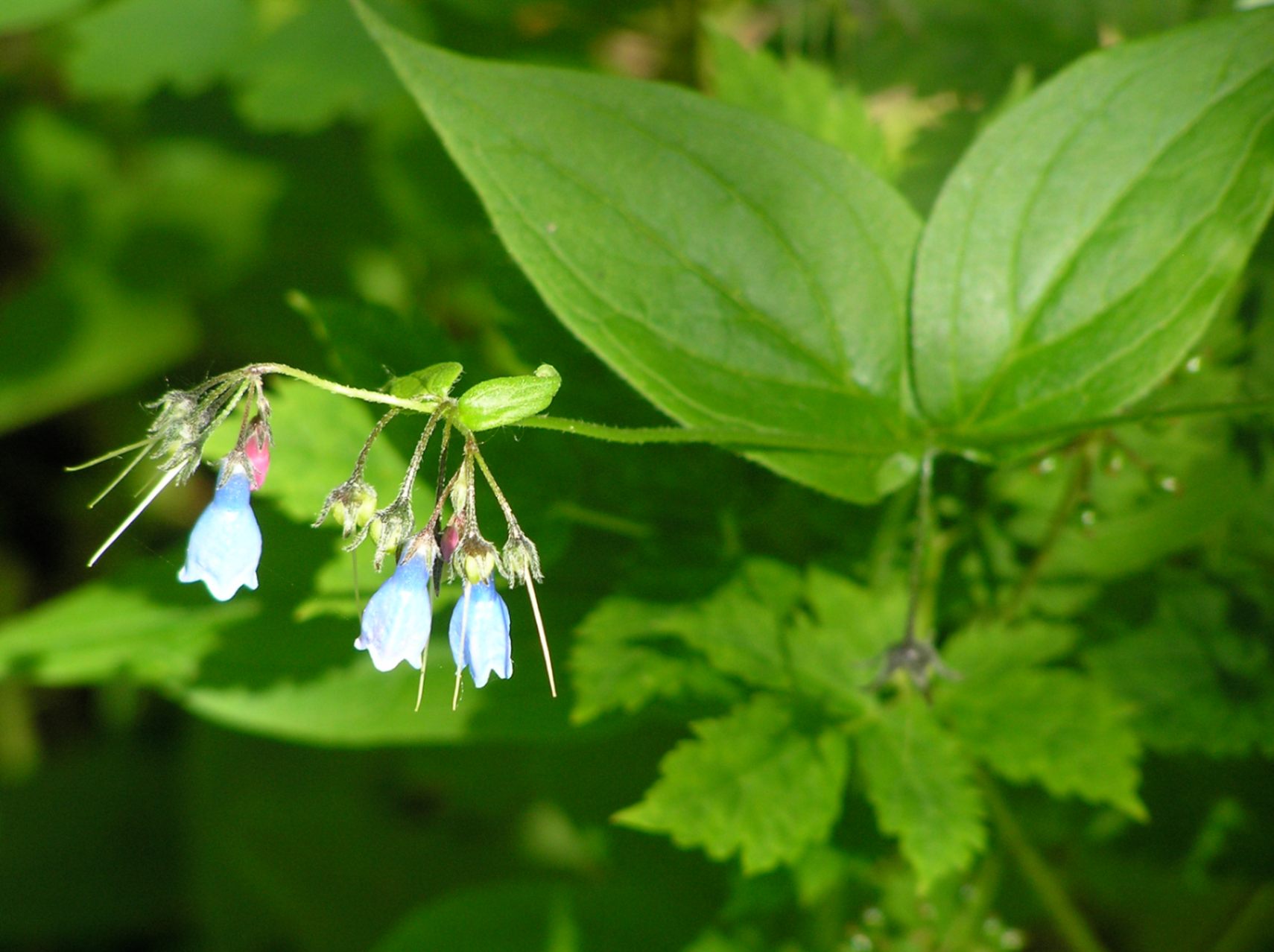
Mertensia paniculate7
Early Blue Violet
One of the earliest wildflowers to bloom, these compact blue flowers are a sure sign of spring. With heart-shaped leaves and a low growth pattern, this plant makes an excellent choice for borders. Attracting early season pollinators, early blue violet also provides food for the caterpillars of Fritillary butterflies.
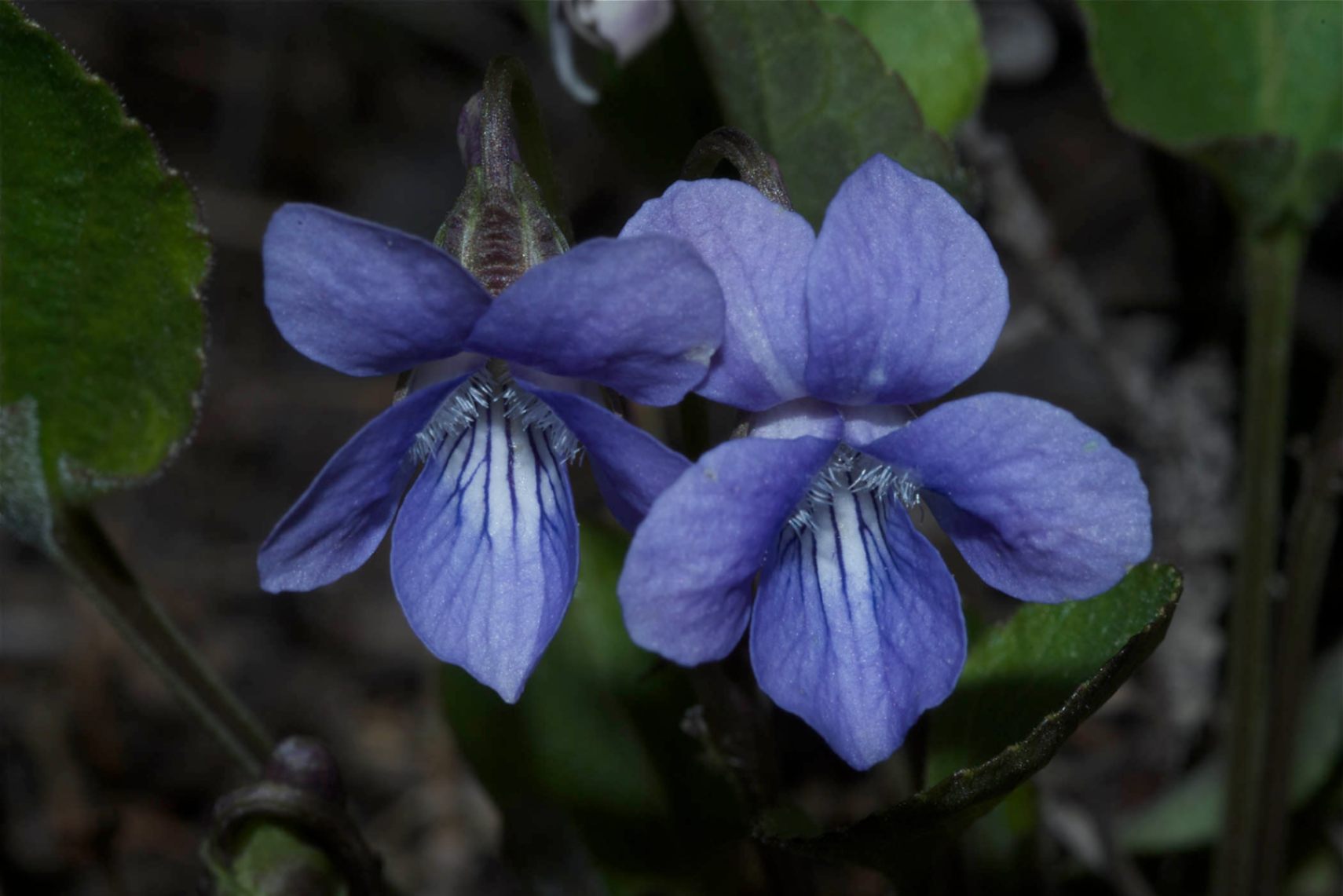
Viola adunca2
Showy Aster
Flowering in late summer and early fall, showy aster blooms live up to their name. With yellow centre discs surrounded by purple petals, this plant adds a spray of colour to fall gardens and is very attractive to native bumble bees. Growing up to three feet in height, showy aster spreads through rhizomes and is easy to divide.
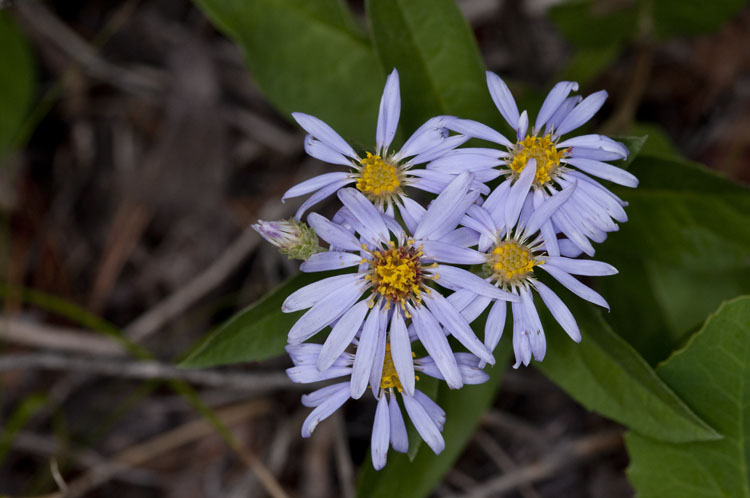
Eurybia conspicua8
Canada Anemone
With a low growing pattern and foliage that stays green throughout the season, Canada anemone makes an excellent groundcover or border plant. Featuring large, pollen-laden white blooms in the spring, this plant is especially attractive to early spring pollinators. As Canada anemone has a spreading growth pattern, it can be used to fill large spaces.
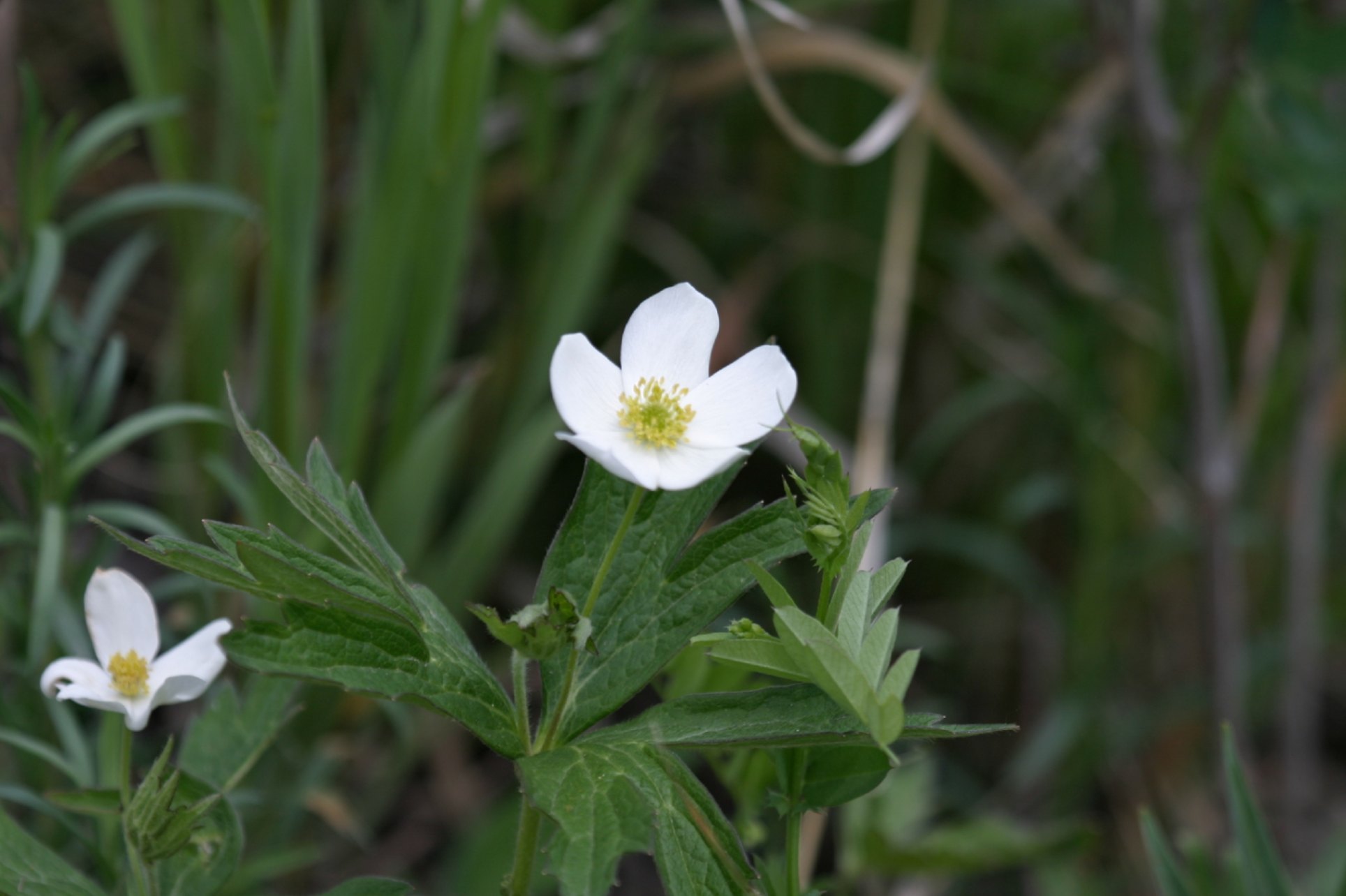
Anemonastrum canadense
Bee City
Calgary is an official Bee City and designated as a Bird Friendly City. The City of Calgary is committed to providing habitat and resources for wildlife by incorporating native plants into our parks and greenspaces. Calgary is a mecca for native bees and 199 different types of bees have been documented in our city. Calgary may contain more kinds of bumble bees than any other city in North America, three of which are endangered species.* Climate change, disease, pesticide use and habitat loss have all contributed to the decline of pollinator populations. By helping flowering plants reproduce, pollinators contribute to healthy and resilient ecosystems.
Consider creating a refuge for urban birds, bees and butterflies by adding native wildflowers to your garden this season. Help create year-round habitat for pollinators by leaving plant debris in your garden over the winter, delaying spring clean up and adding nesting sites in the form of wood stumps, loose patches of bare soil, and hollow plant stems.
Learn more about native plants and pollinators in Calgary and Bee Citizen Science.
Photo credits
1 Courtesy R.W. Smith, Lady Bird Johnson Wildflower Center. 2 Courtesy Terry Glase, Lady Bird Johnson Wildflower Center.. 3 Courtesy Alan Cressler, Lady Bird Johnson Wildflower Center. 4 Courtesy James L. Reveal, Lady Bird Johnson Wildflower Center. 5 Courtesy Andy and Sally Wasowski, Lady Bird Johnson Wildflower Center. 6 Courtesy Al Braden, Lady Bird Johnson Wildflower Center. 7 Courtesy John Hixson, Lady Bird Johnson Wildflower Center. 8 Copyright 2014 Richard Spellenberg, University of California, Berkeley. 9 Courtesy of ALCLA Native Plants.
References
* University of Calgary Urban Alliance 2021 Report; COSEWIC Committee on the status of endangered wildlife in Canada (cosewic.ca/index.php/en-ca). Plant taxonomy is based on Vascular Flora of Alberta: An Illustrated Guide (Kershaw & Allen 2020)
Homeowner Water Guide
Discover a wealth of programs, tips and tools for creating a water-efficient home and yard.
Downloadable pdf guide
Need help designing your garden?
Not sure which plants to use or the right spot to plant them?
Download our step-by-step pdf guides or click on the image below to learn how to create beautiful and low maintenance garden beds which work in all areas of your yard:


